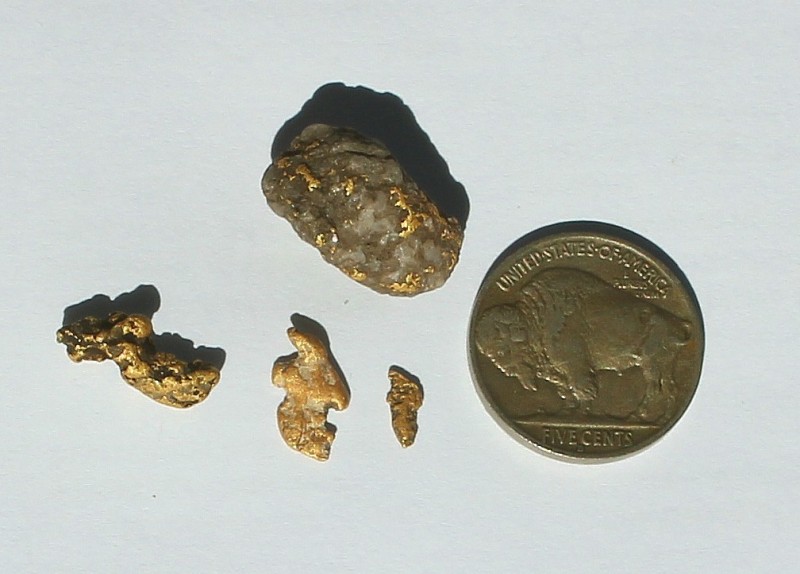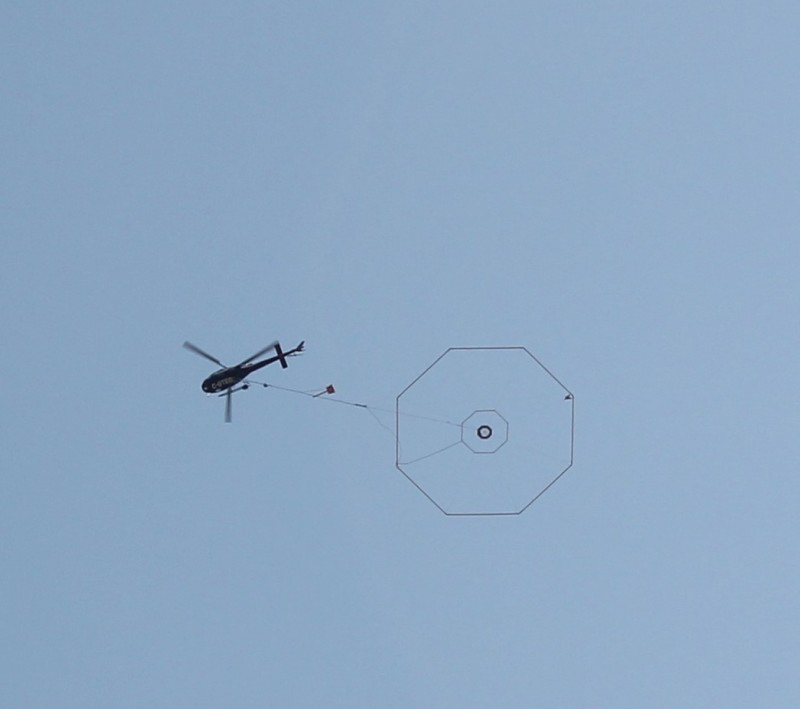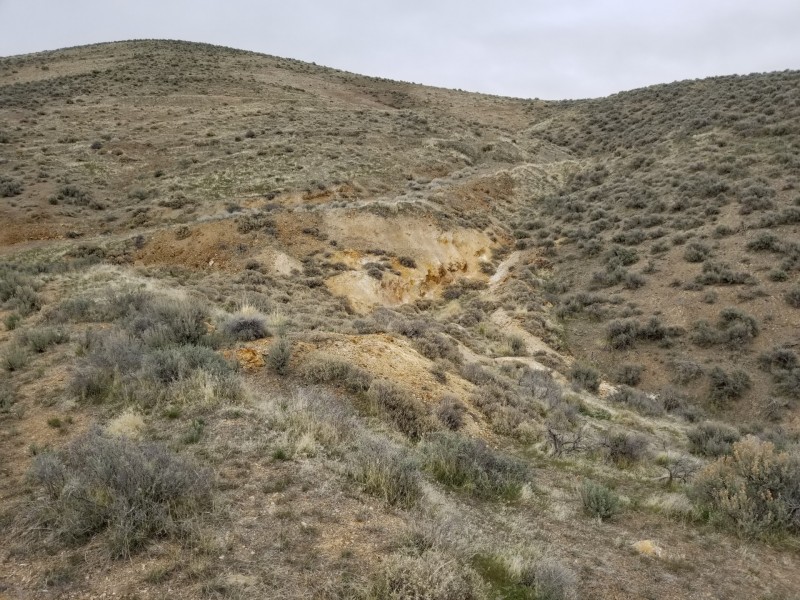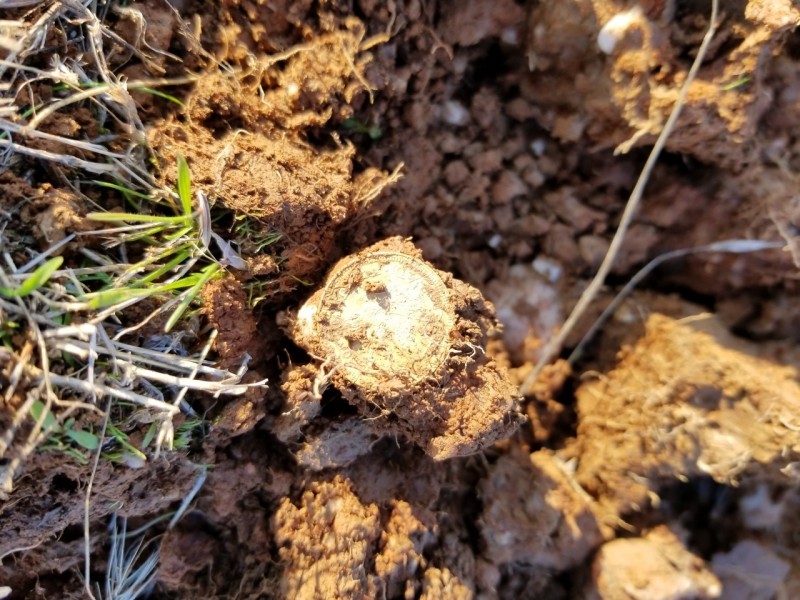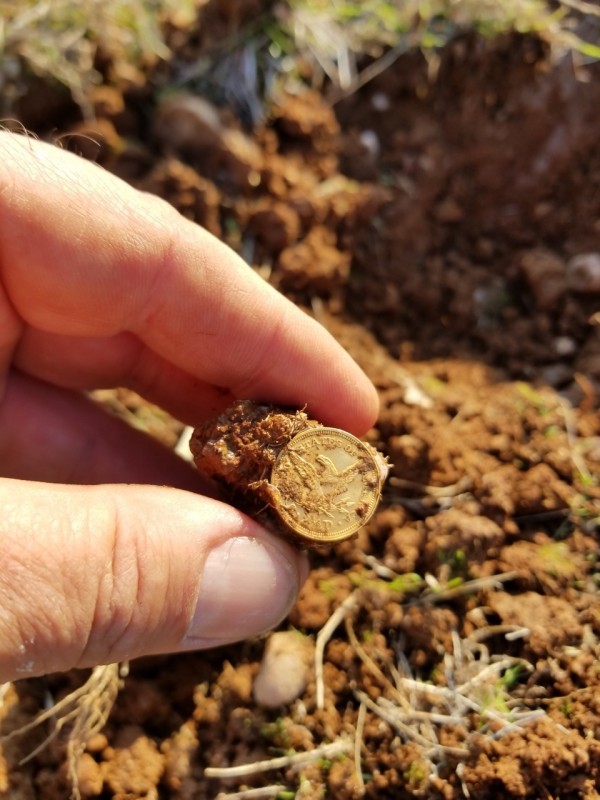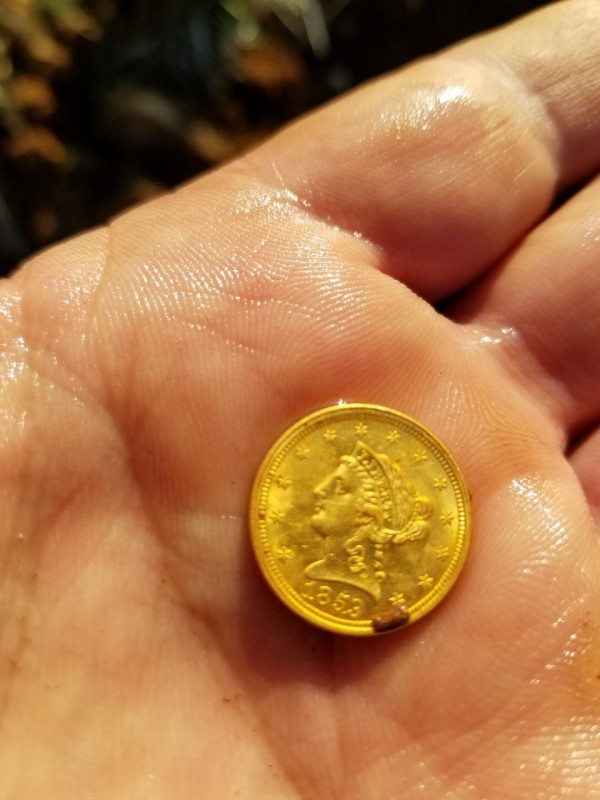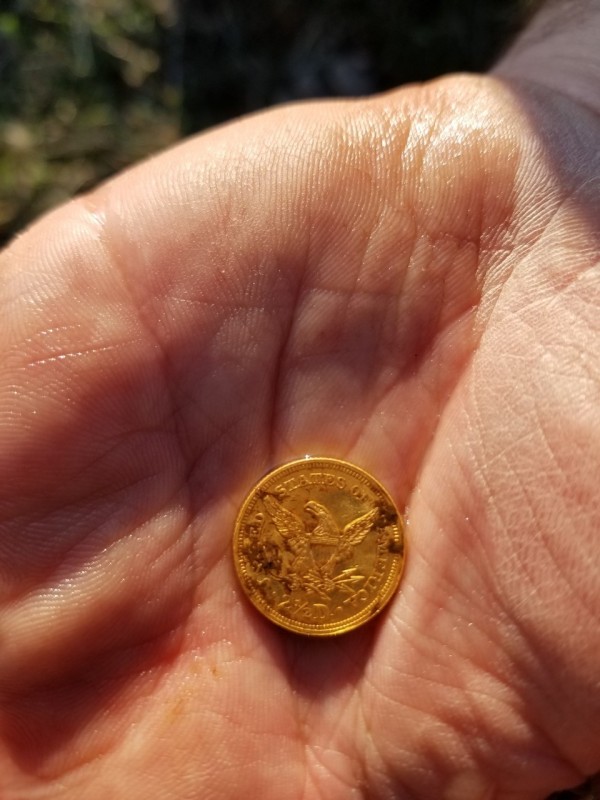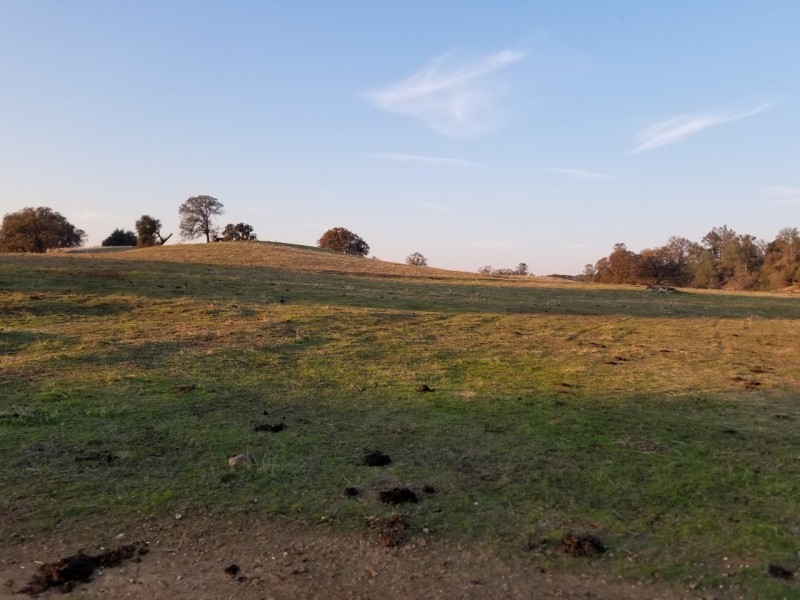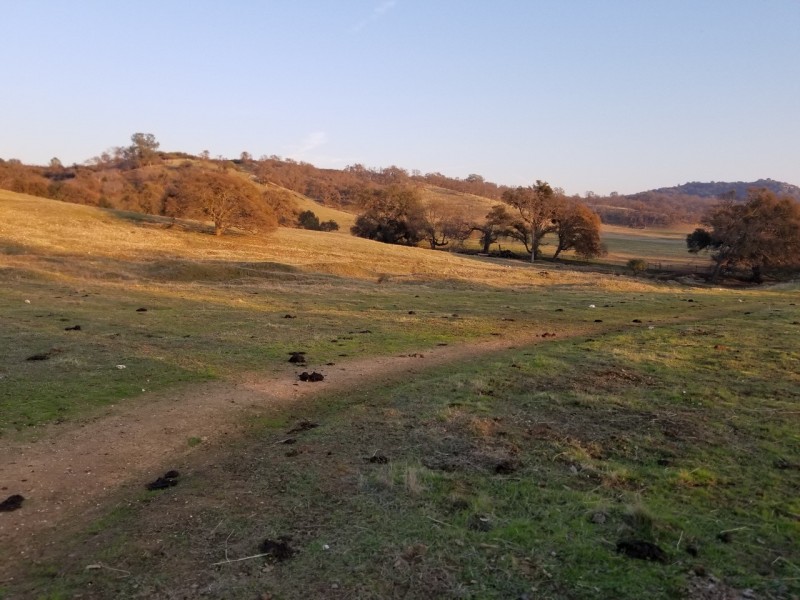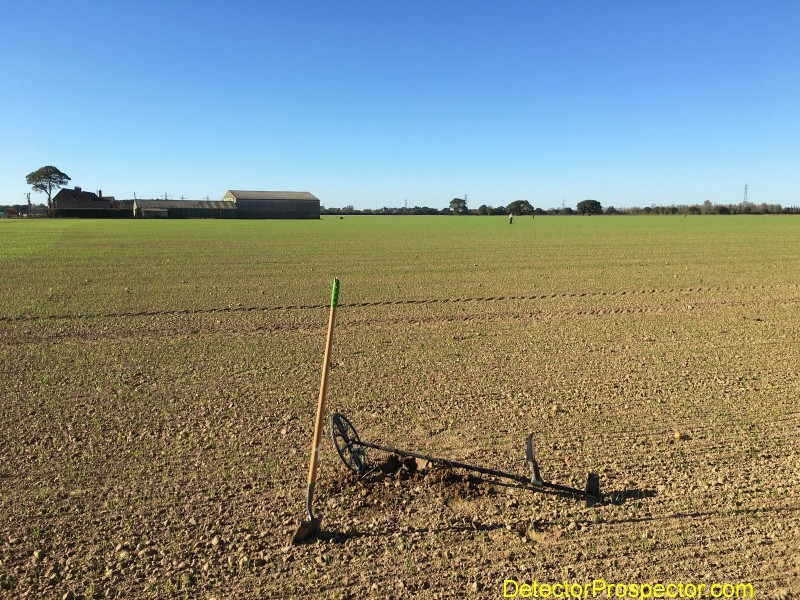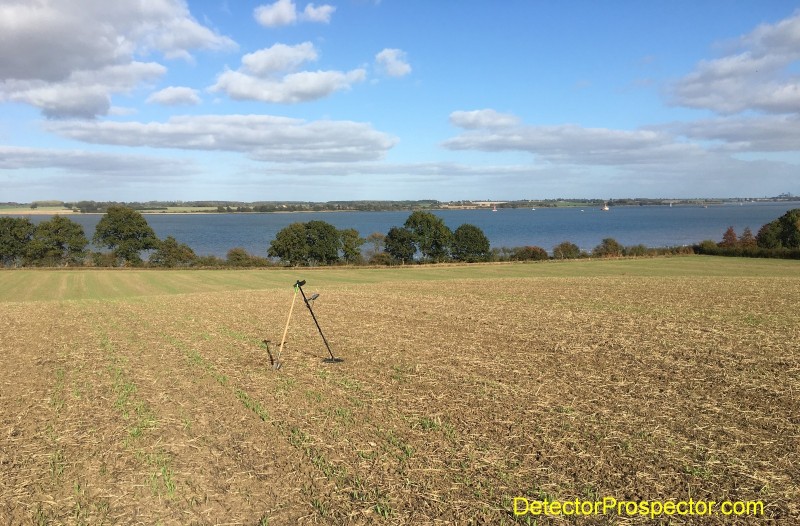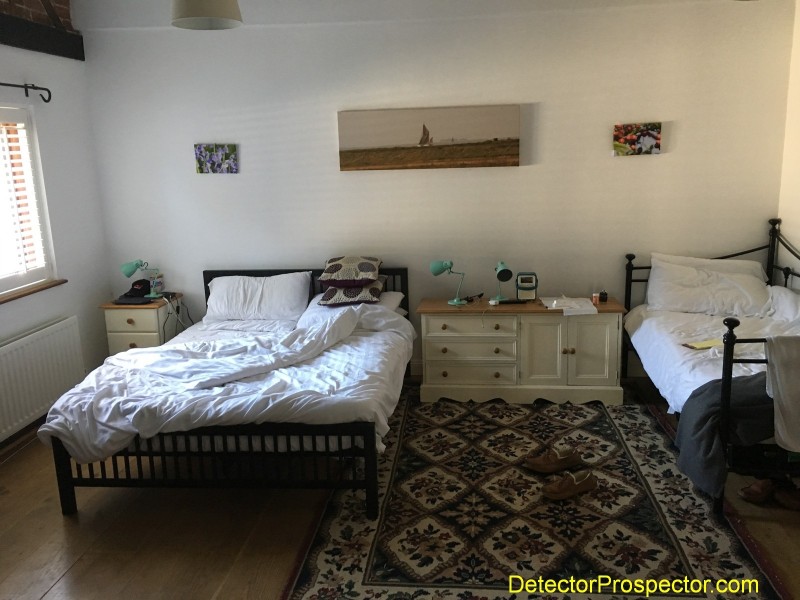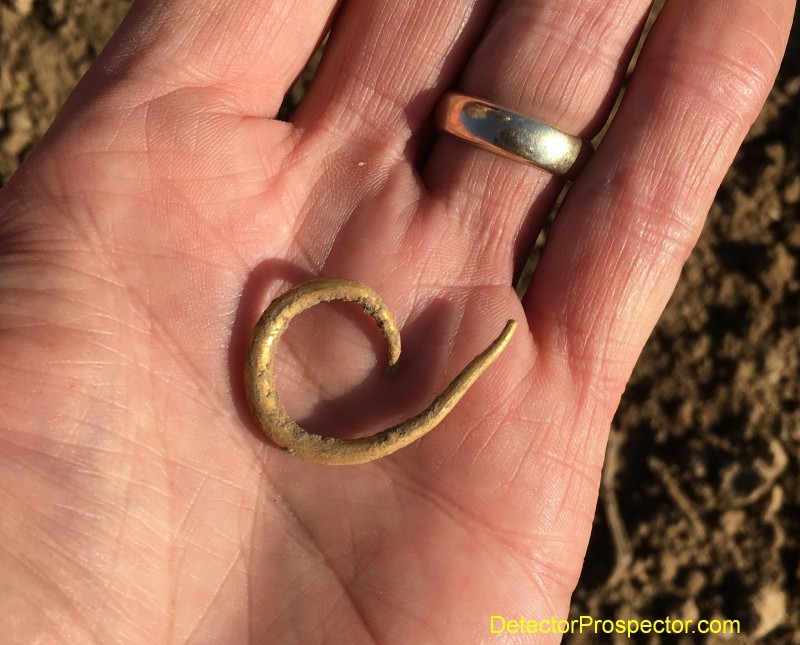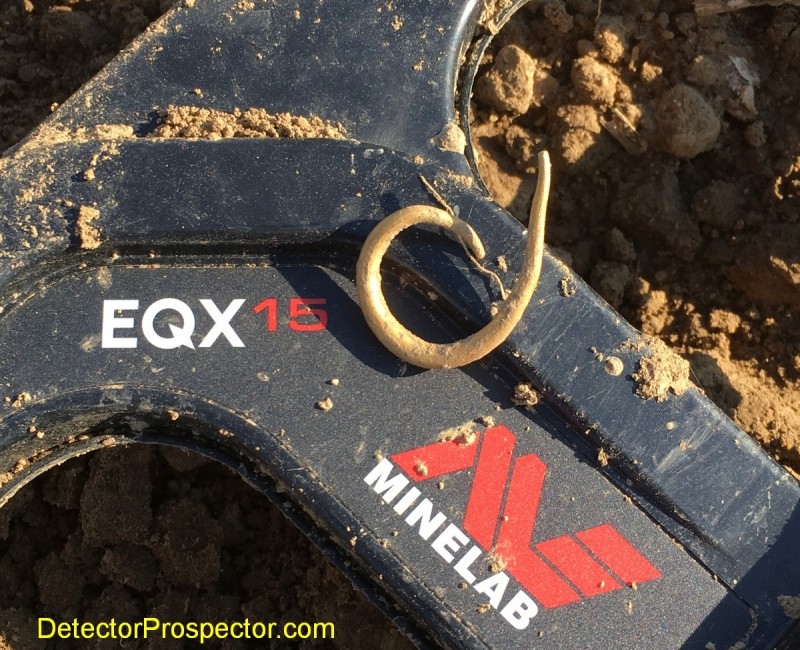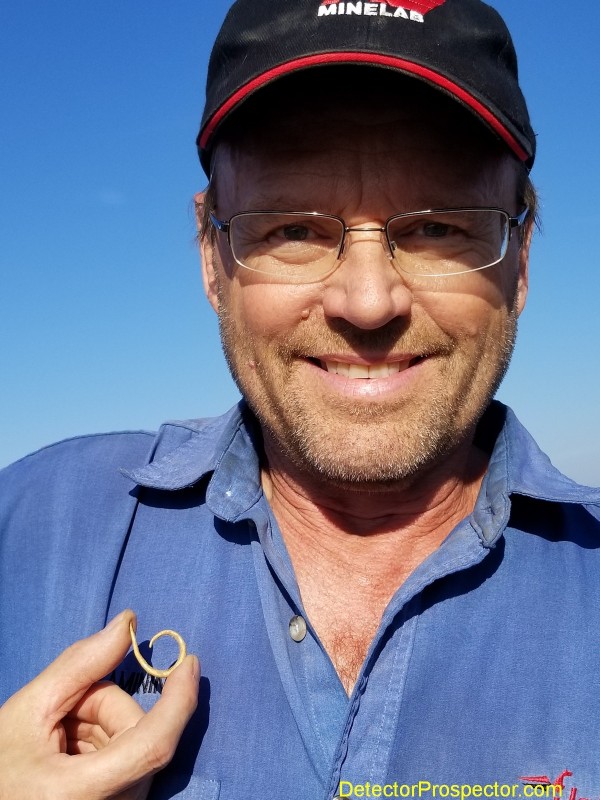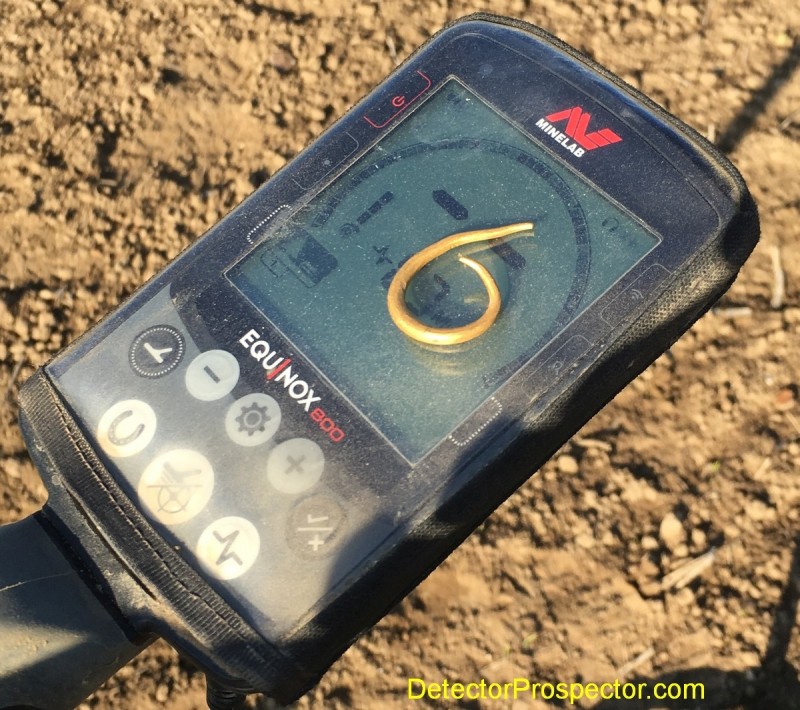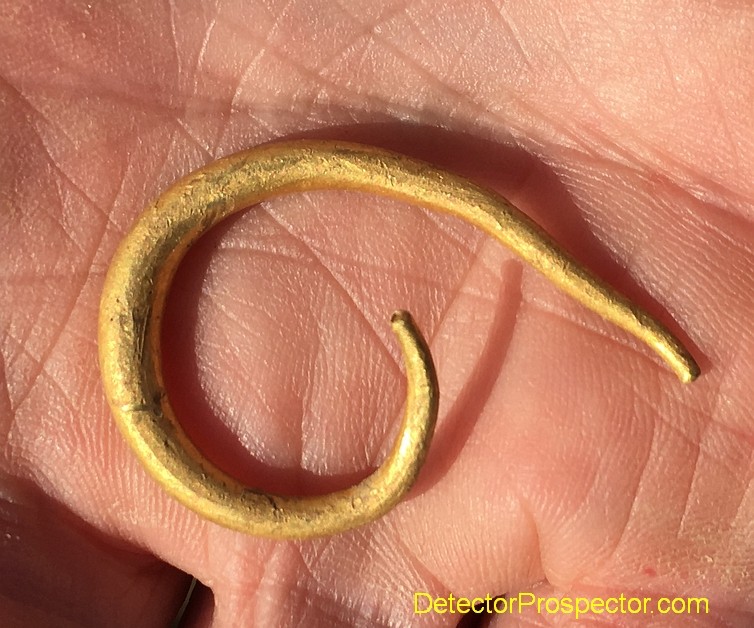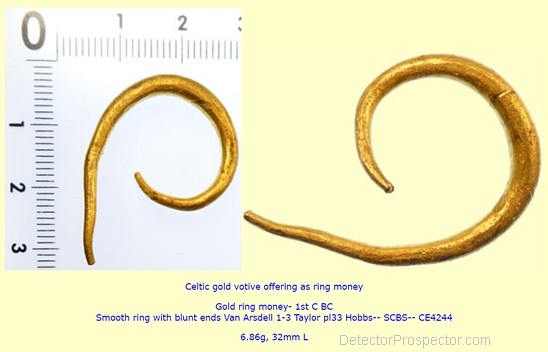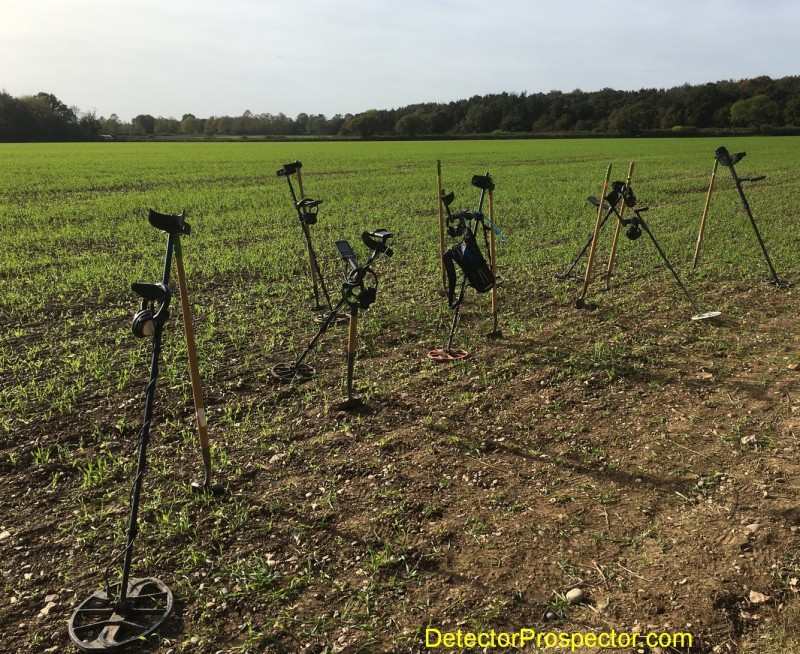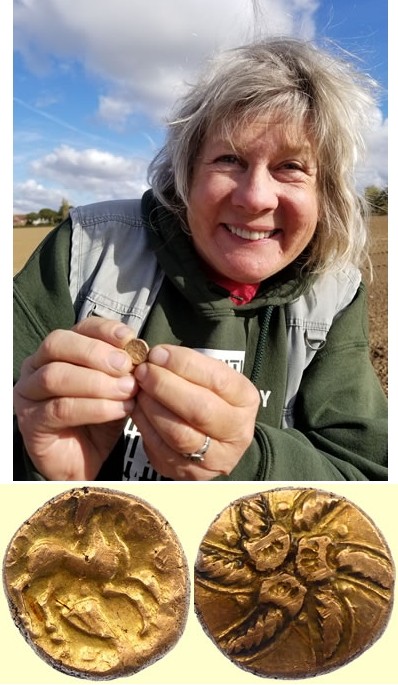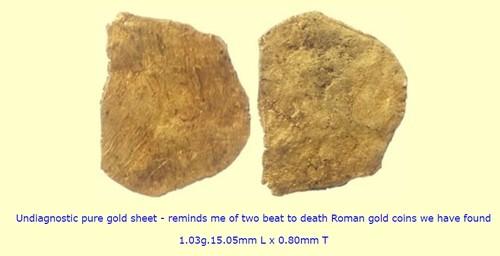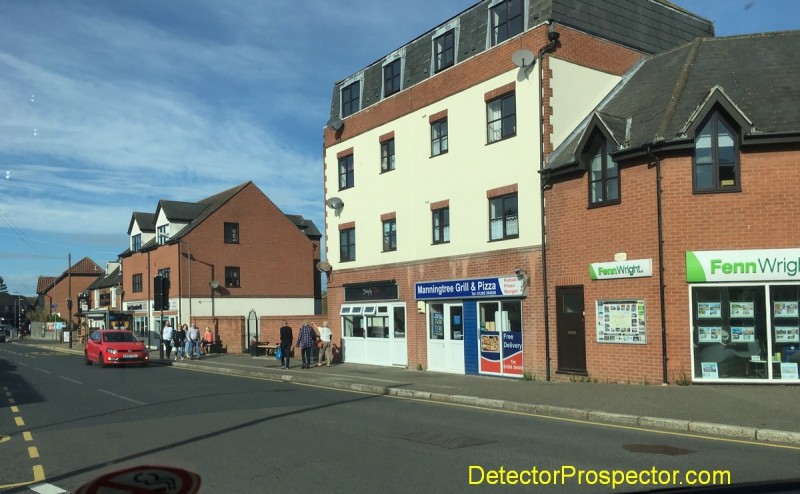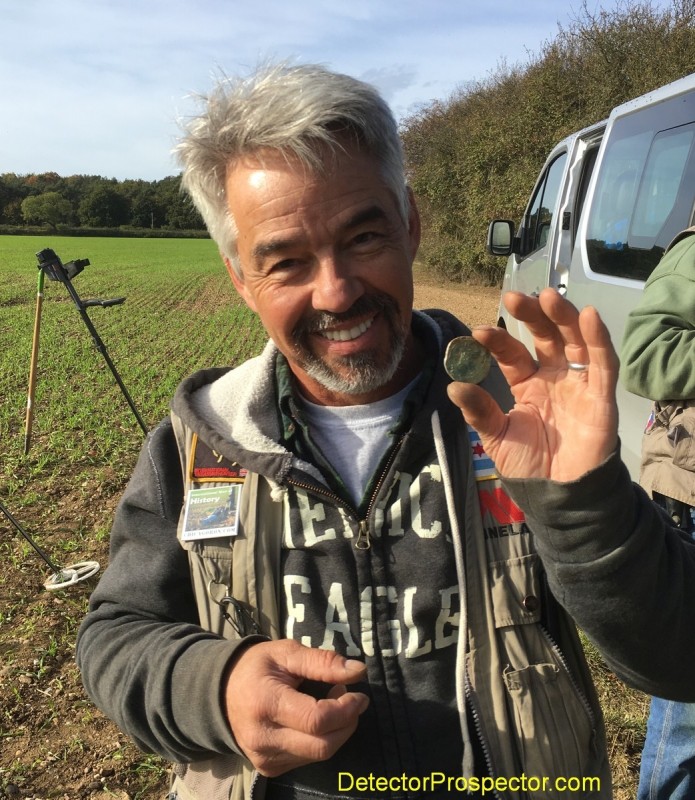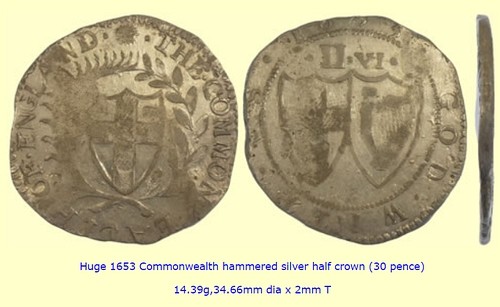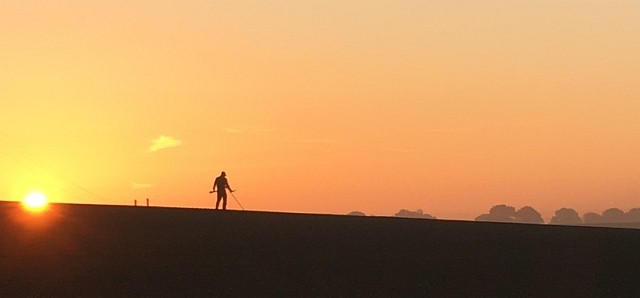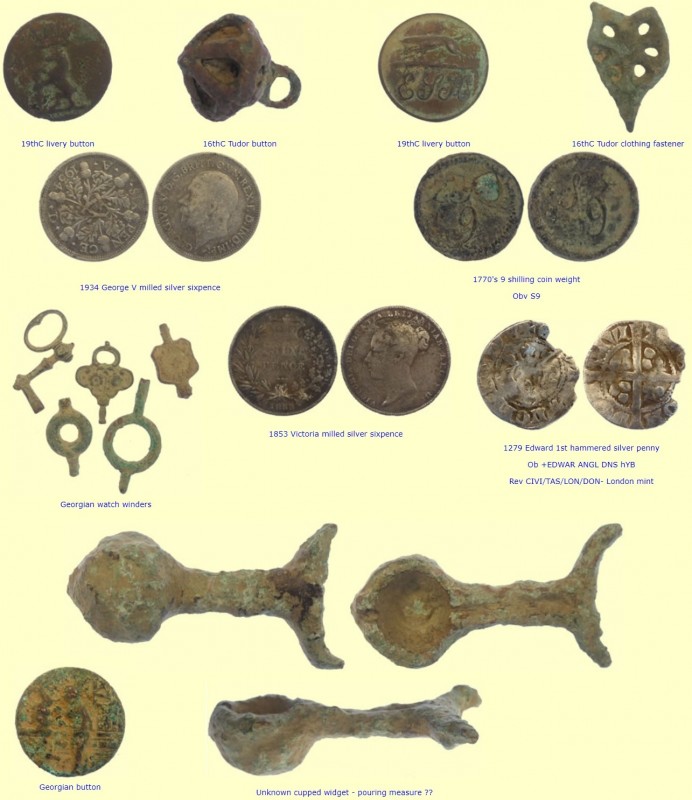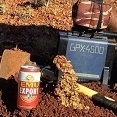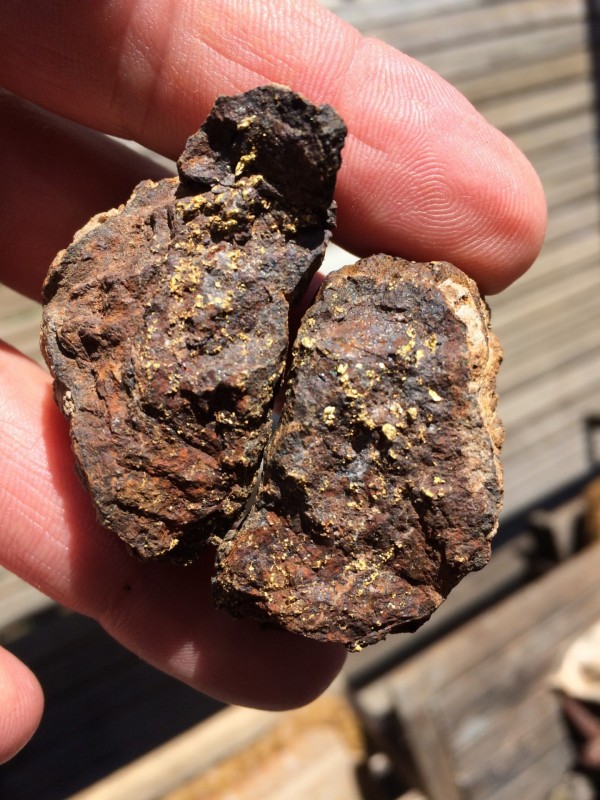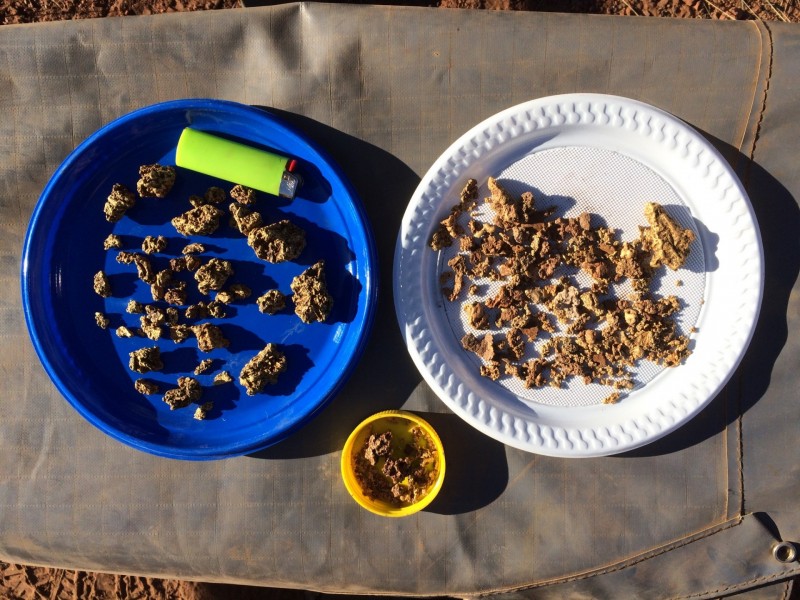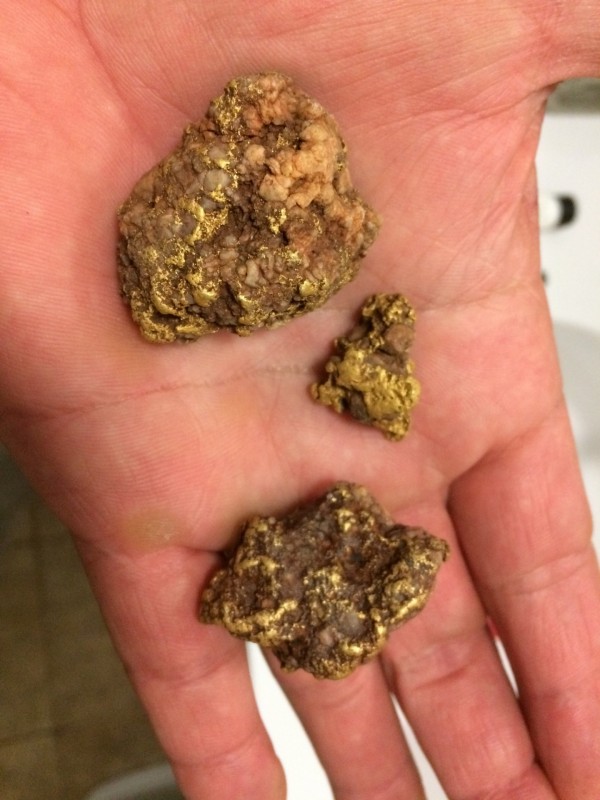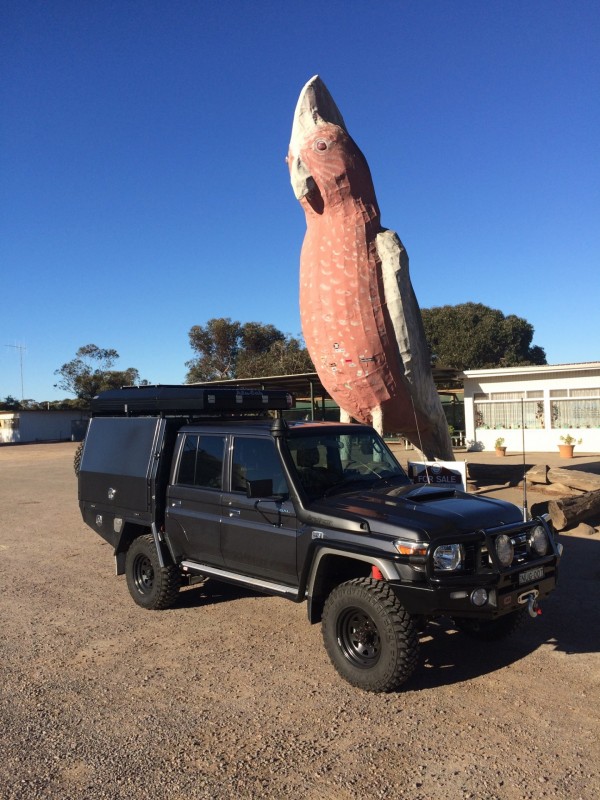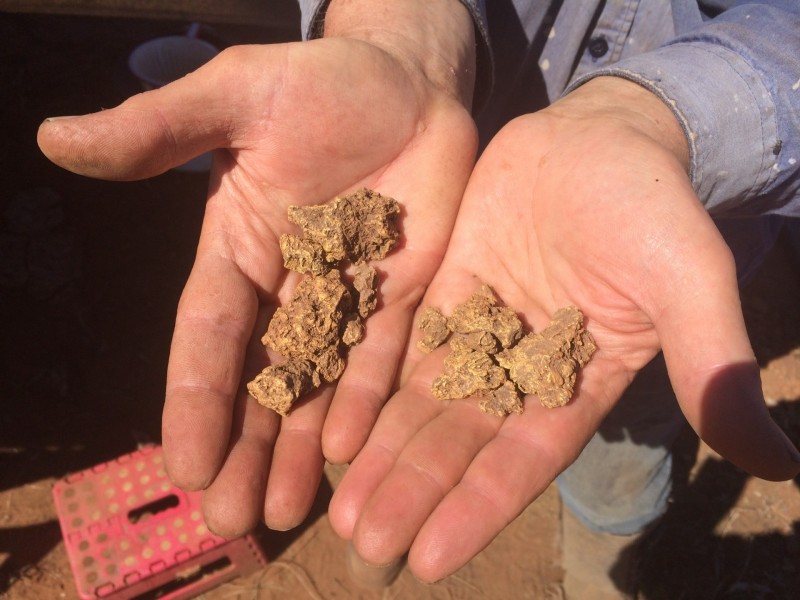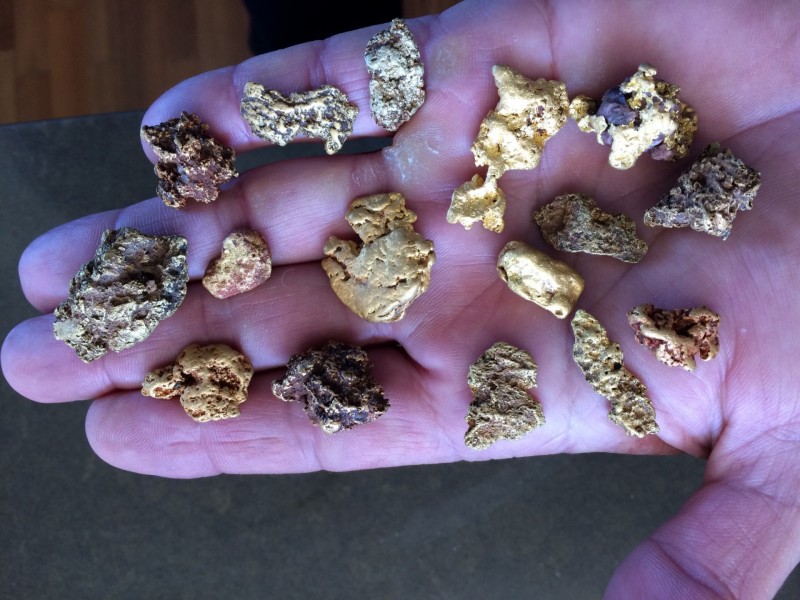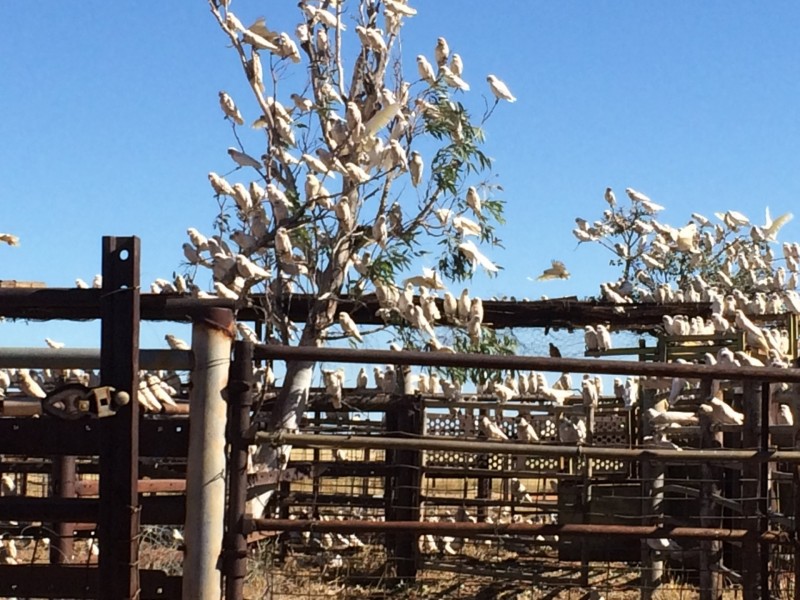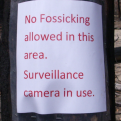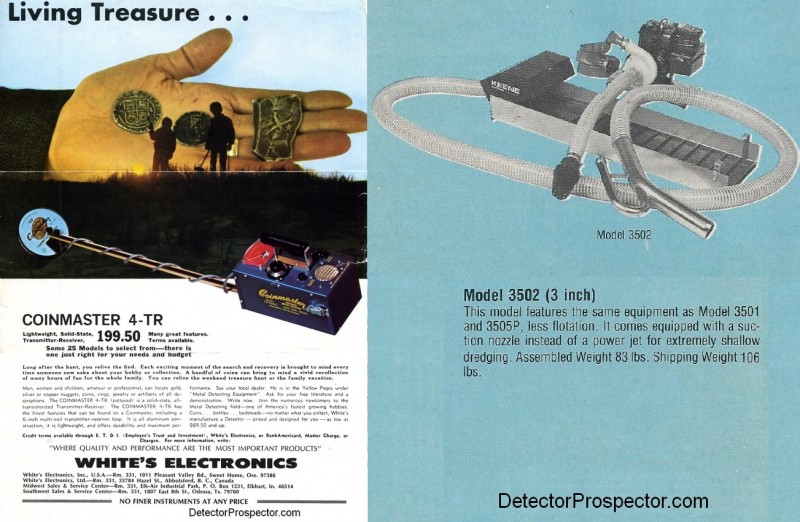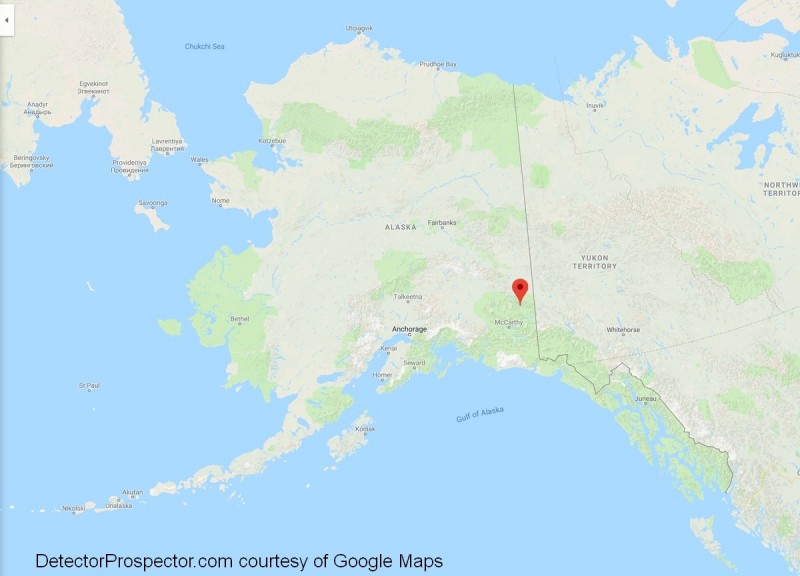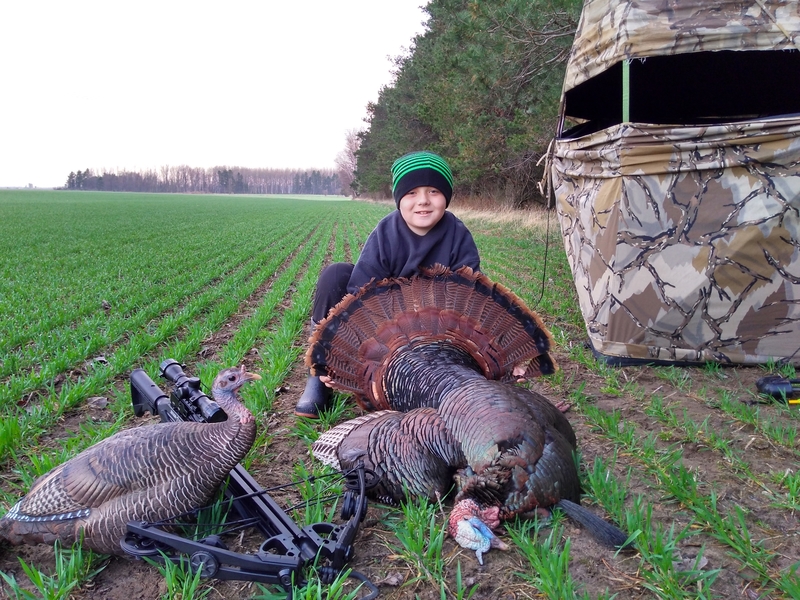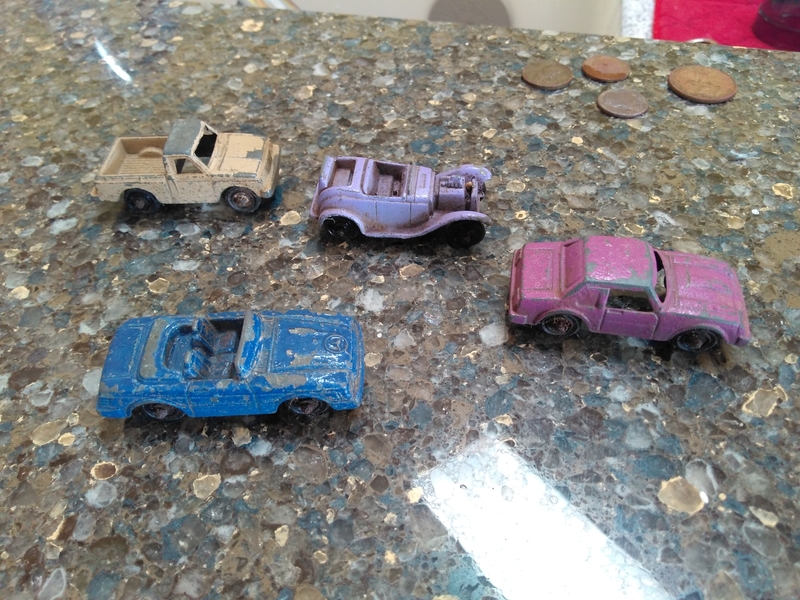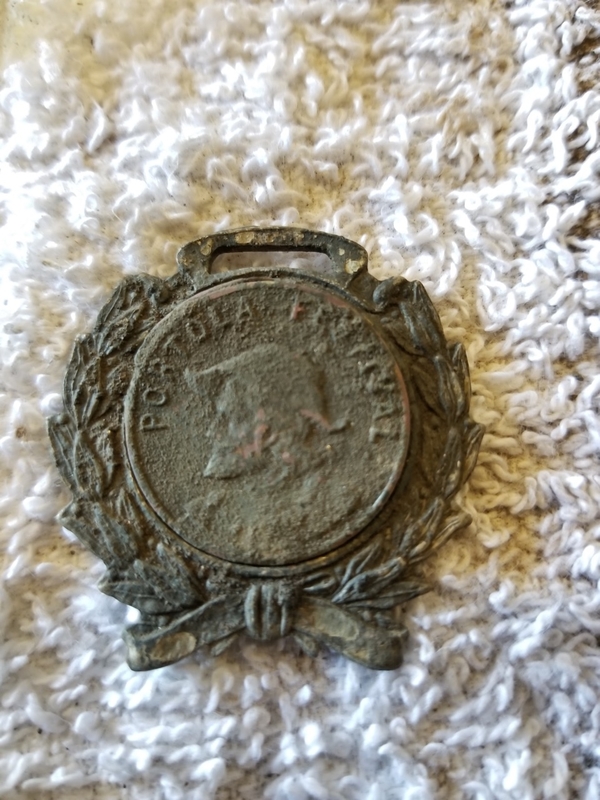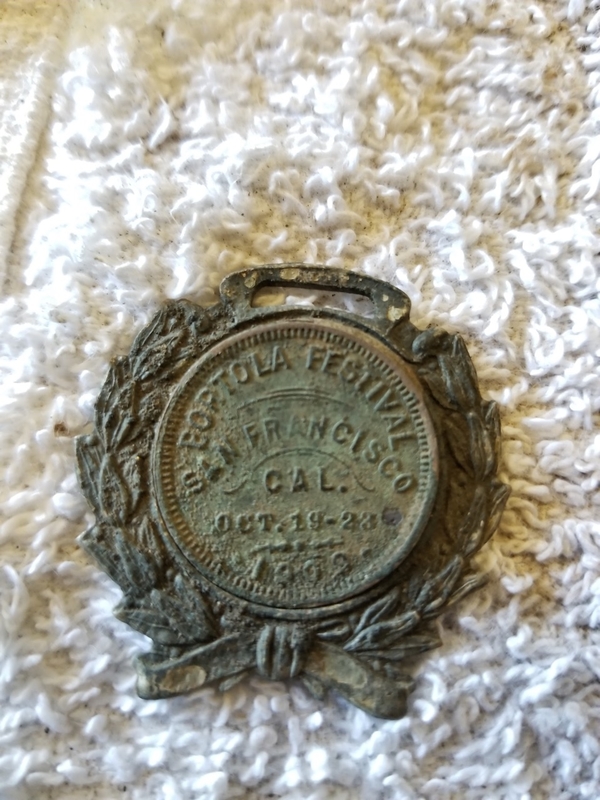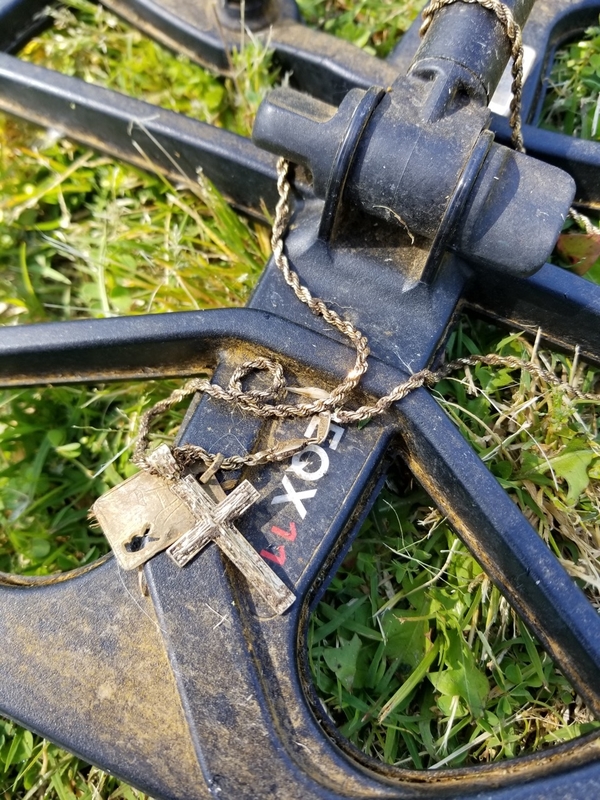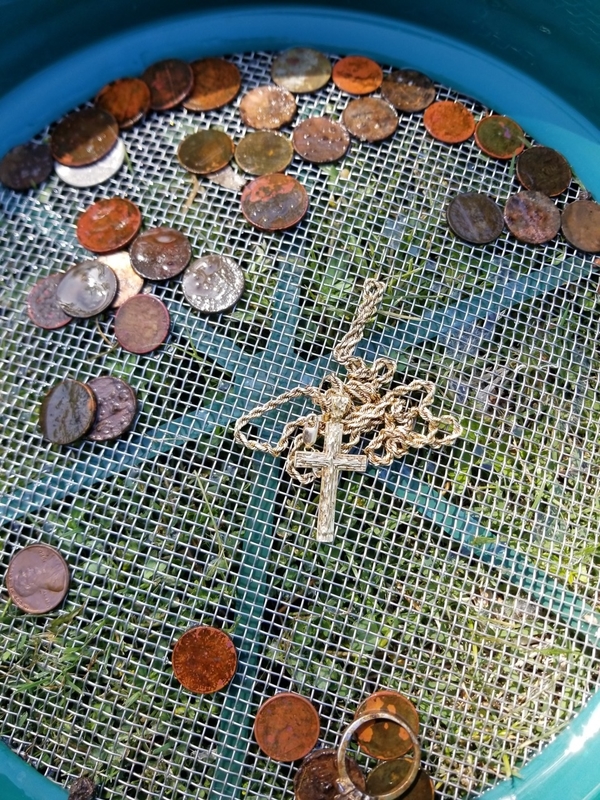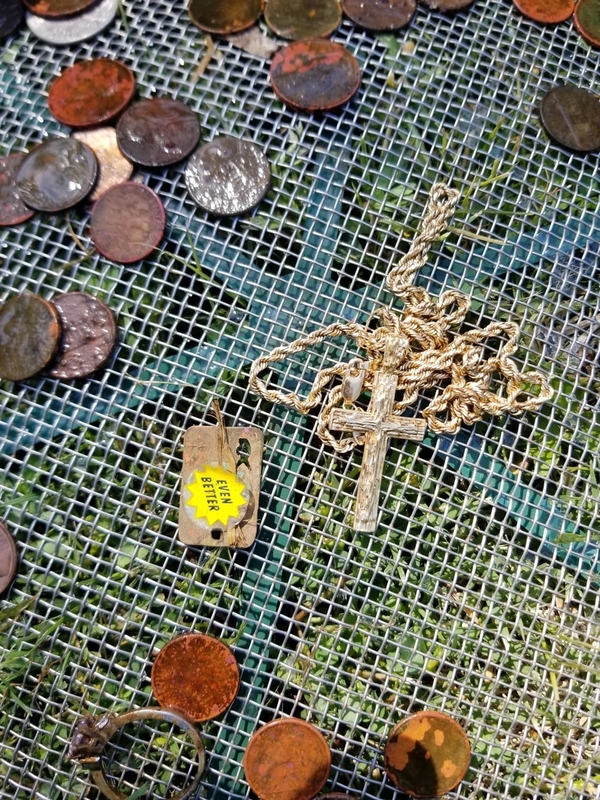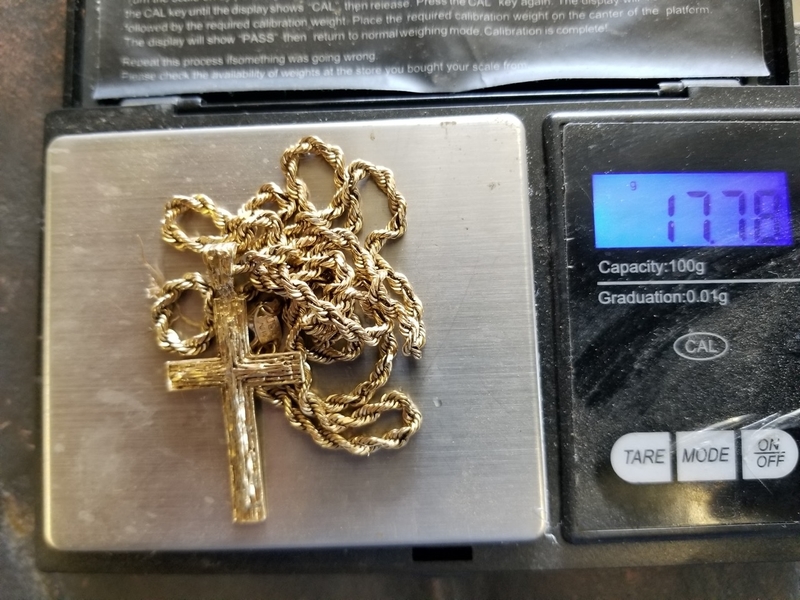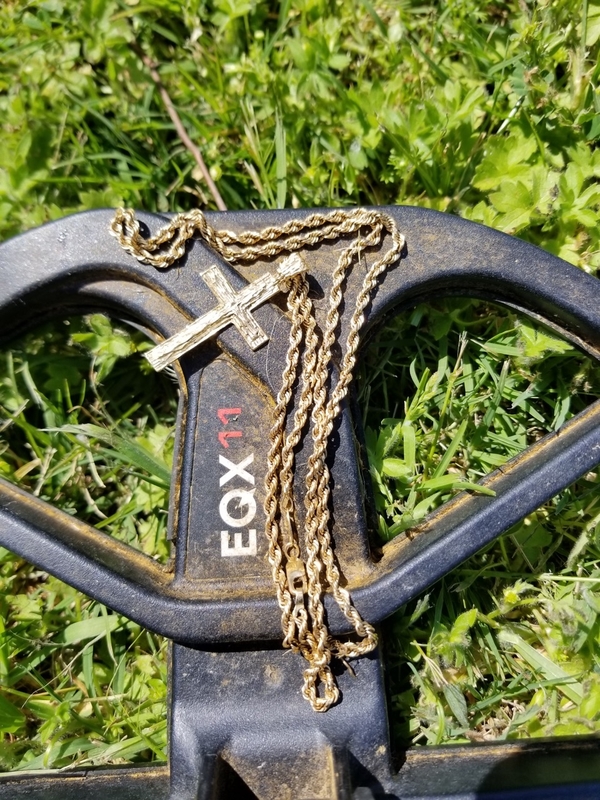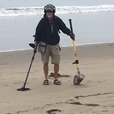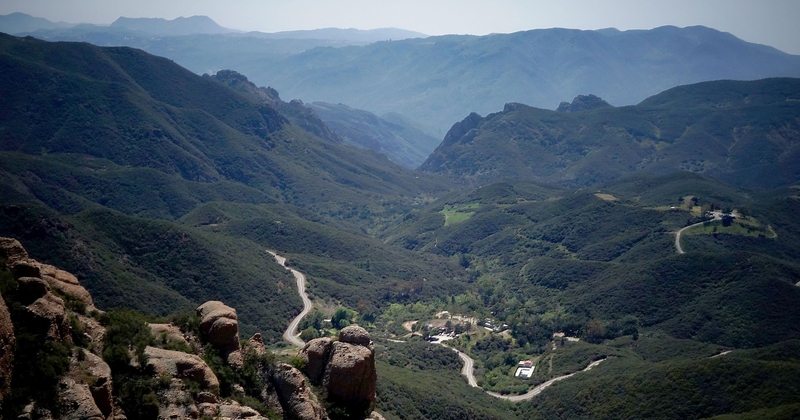Search the Community
Showing results for tags 'stories trips adventures'.
-
My first pulse unit was a ML 3000, I had carried the unit to Az from Ak without opening the box. I was camped at Decision corners not to far from the old cemetery. Remembering events sometimes taxes you lol, but this was the year that Jonathan Porter came to the US and he was camped not too far away with his group. That evening I charged the big battery and laid everything out for assembly in the morning...After some food and detector assembly my friend and I drove over past the GPAA campground looking for a spot to try out our units. We parked near a metal building and I walked up the hillside towards a flat bench area I had spotted from the road...I made exactly two swings with my detector and I heard this signal sound I will never forget.. Weeee. Oooop lol that's gold for sure, and how could I be so lucky..
-
The old coinshooter has been gone now for many years (1993) but I remember him very well..he used a CM 3 then, which he just wore out, it was replaced with a brand new Coinmaster 4...I got to hunt with him a few times and it was a pleasure to watch him slowly shuffle along he would stop scan back and forth and either dig or move on, I knew he was listening carefully.. We were hunting together in an old park, lots of targets old steel BCS mostly and other junk.. He called over to me and said what do you think about that? He used one of those old diggers that looked like it was made from conduit with a long narrow point, perfectly stuck on the end was a nice little gold ring..... This person had a ring collection that would choke you, in fact one ring he told me about that he had found was a gents gold piece with a large precious stone, he had taken it to a jeweler that cleaned it for him and I think later he sold it to the jeweler for enough to buy himself a new Ranchero...I tried to hunt with him as much as I could but we lived quite a distance apart and I was just starting to work on preliminary Trans Alaska pipe projects... By the time I could spend time with him he could no longer swing that heavy Whites unit but he liked tagging along with me.. The gold rings he had found were sold but the other pieces he had tied together on a string and there were many.. I haven't looked in the big canvas bank bag he gave me years ago that was almost full of dimes, quarters, halves and a few silver dollars he had found at the old Fairgrounds, parks and old closed country school yards.I .learned a lot by watching how carefully this person hunted, slowly, listening and moving around..He did his homework, a little research and talking to the old timers that stopped by watching him...Who was this person? This Old Coinshooter, I knew him very well, He was my Dad....
-
Last year was not a banner prospecting year for me. I got out a number of times and did detect some gold and did some dry washing, but it was a year of other problems and obligations. I had two trips to the hospital, one emergency by ambulance, and one for surgery on my heart (not open heart, but the doctor put a probe up through a vein into the inside of my heart). My wife had two stays at the hospital as well. We also spent time moving my elderly mother in law from southern California where she has few remaining relatives, up to Reno. I did get out and find some nice gold in my prospecting, but I made fewer trips and got less gold than I have in many years. I did however, do some serious hard rock prospecting in 2018 and made two deals with mining exploration companies to lease out properties that I own. One deal was made on a set of claims that I had staked years ago, while the other was on a large set of claims I staked in 2018 (along with two partners which I have in that claim group). We staked over 200 claims in that group and it took some time in getting all of those claims out and posted. The company that leased those claims from us flew a helicopter survey over them and made several exciting finds. The ore bodies likely found there are electrically conductive, and the coil and electronics used to “see” the ore bodies are of a pulse type design – just like the pulse detectors we use, but with a gigantic coil and a bit different electronics. So I can look at 2018 in a couple of different ways – for the direct gold I dug, it was a very poor year. Yet for the total money I made on my prospecting it was a different story. Counting the money I made on leasing out claims in 2018, if you calculated out the equivalent ounces of gold, that would make it my best year ever, by far. The money was the bullion weight equivalent of several pounds. So in 2019 I hope to stay out of the hospital, and to take no rides in ambulances. I pray my wife stays out of the hospital too. I hope to spend more time in the hills prospecting, and do more detecting and more drywashing as well. I will stake some more claims and see if I can get those leased out as well, but I really want to do my own prospecting as I enjoy that so much. For those interested in more details on the story of the claims I staked and how I got them leased off to two different exploration companies, I have a story this month in the ICMJ – called Making a Big Discovery. In the February and March issues I will have a two part article on how these lease contracts are structured and what a small miner might expect in such a deal. Photos – A few of my detected nuggets; the helicopter surveying my claims, and some of the ground where the claims are located.
-
It's been well over 4 months since I have picked up a metal detector. A house remodel and some landscaping has kept me away from the treasure fields unfortunately. When my buddy Merton called and said he wanted to go on a hunt all I could think of was that I needed to get the house finished before I went goofing around with a metal detector. Reluctantly I told myself that I probably could use a break and so I invited him to come on down. Merton, being the thoughtful guy he is called a couple days before our designated date and gave me the option of cancelling but I told him to come down and lets go for a hunt! I was starting to look forward to it as we always have fun treasure hunting together. I had already decided we were going to the spot where I found the old antique gold ring this past May. I had yet to revisit this spot. https://www.detectorprospector.com/forums/topic/6528-needle-in-a-haystack/ This area is on private property and has a small area of mining activity. It's not on any map. It's a tough area for the nugget hunter, the dozen or so pieces of gold that I have found here are small and few and far between. To make matters worse the area is loaded with lead from #9 bird shot to old 50 Cal plus round balls. For now I've pretty much written it off for gold hunting and would rather be a lazy relic hunter there instead. Up till now I had never found a old silver US coin there despite having made 7-8 visits to the area. A few old Chinese coins, a couple powder flasks, some gun parts and the surprise gold ring form the last hunt were enough to lure me back. As the saying goes "if you don't use it you loose it" And I had forgotten how to operate the equinox 800. The night before our hunt I broke out the owners manual that I had printed out (my wife made a nice binder for me) and brushed up on how to work the machine. I went outside and played around in the yard a bit with the detector. I'd even forgot how to noise cancel and was beginning to have doubts thinking I was wasting my time. Saturday found us in the foot hills on a bright sunny morning surrounded by herd of 75 very hungry cattle. I told Merton I was going to go on a walk about starting where I had found the gold ring and I'd catch up with him later. Merton with his XP Deus headed for whats left of some old chimneys down in a flat close to some tailing piles. I decided to keep things simple with the equinox so I put it in park 1, 5 tones, ground tracking, recovery speed 5 and Fe 1. The ground here is very noisy and it took me a while before I got back into the hang of things knowing which targets to dig and which to ignore. After about an hour of detecting I had it down and was building confidence. About two or three hours had gone by when I caught up with Merton. Neither of us had found anything really good. The place is not a very target rich environment for the relic hunter. We went back to the truck for a beer and some lunch. After lunch I told Merton that I was going to go up on the hill above the main camp and workings since neither of us had hunted it very hard before. This is where things start to get interesting. I had been gridding the hillside for about an hour or two when I came across a rare high tone. Kinda scratchy...but repeatable. A couple swings of the pick and out pops a seated silver dime in excellent condition. Immediately I call for Merton who is about a hundred yards below me and show him the coin still in the hole. I tell him to start working this area with me. Merton is a very polite detectorist and using good etiquette he heads up hill a little ways from me as to not encroach upon my new spot. Maybe another 20 minutes or so goes by and I'm about 20 yards or less from where I found the seated dime and I get a mid tone on the Equinox..14-15 and repeatable. Thinking it's just another shot gun cap or lead ball I dig a little dirt out with the pick....my Garret carrot says the target is an inch or two behind and to the right of where I originally thought it was. Using the Lesche I start digging out the area and out pops this little gold shiny thing. I could only see part of it but it had a serrated edge and I immediately knew what it was even though I had never dug one before! Gasping and jumping backwards all I could do was call out for Merton to get over here! he could tell by my excitement that It was something good....he's smiling as he walks down..... "What did you get a half dollar?" I shake my head no...."Silver dollar?" again I shake my head no....."A GOLD COIN?" all I was capable of was looking up and smiling as I was still speechless. As I went down to reach for it and Merton says "CAREFUL DON'T RUB IT!" There was a lot of congratulatory back slapping, high fives etc... then without touching the coin I said I got to go to the truck and get my phone so I can take some pictures. The coin is in excellent condition (1853 2.5 dollar) which is hard to believe since it's been in the ground for well over a hundred years. Here are the pictures so you can see what we seen. We went back the day after and then hit another spot a couple days after that. We managed another Seated and a few other trinkets. I'm back to working on my house again and Merton is out at sea. But I'm looking forward to our next hunt together. What a great hobby. strick
-
I was just updating links and realized I have been posting adventures to Steve’s Mining Journal for over twenty years now. The Journal started when the internet was new, and information about metal detecting and prospecting for gold was new and rare. Metal detecting was still an obscure activity and gold prospecting even more so. I started posting the stories on my old company website as a way to show people this stuff really works and to help promote the business. It was one of my better decisions, as documenting these adventures has turned out to be far more important to me than anyone else. Memories fade with age, and I can’t do this stuff forever, so it is great now to have all these adventures to look back on. Anyway, many people never leave the forums and explore the rest of this website, so I thought I would post this to celebrate the unofficial 20th anniversary of Steve’s Journal for those who have never wandered across it.
-
I had seen a movie called "The Ballad of Buster Scruggs" pop up on Netflix and then saw Reg W comment on PA that he had seen it and mentioned there was some 'loaming' in it. Sat down to watch it tonight and it is a series of short stories. 4 stories in so far and they are all 'old west' themed. Some funny, some weird, some sad. Well, the last one we watched was called "All Gold Canyon" and about 5 minutes in I thought to myself "I know this story". I read it here on a thread that JW started - there is a link to the story in his first post. It is well worth a read and the short film does the story good justice too. Enjoy the read and if you get the chance enjoy the film - there is some very nice fake gold in it ?
-

My UK Trip .... Double Ancient Gold!
Ill Digger posted a topic in Metal Detecting For Coins & Relics
I've returned from my second detecting trip to England and what a trip it was!! I was lucky enough to be staying in the same barn as Steve Herschbach!! The first day on the fields are a half day usually. After the 2 hour ride from London to the "barn" where we will be staying for the next seven days. The "barns" are actual barns that have been renovated into vacation rental units. We unload all of our luggage from the van, find our sleeping spot for the week, dig out all of our gear, assemble everything, jump back in the van, and head out to the first field! My best find that afternoon was a hammered copper Rose farthing. They are commonly dated 1636. (Look for the pattern here). And the usual buttons and lead. So that was a good start. Day 2: Our first full day. A cool, slightly foggy, just perfect! The day wasn't real eventful for me. We hunted two different farms. At the end of the day my better finds were 5 farthings and a wiped out copper token, plus some buttons and lead. The farthings were late 1700s-1800s. Here at home in the States, to find those 5 coins would be a day to talk about for months. It was funny for me while I was over there, knowing with so much history the possibilities make my hopes and expectations exhilarating! You truly never know what will pop up next. It could be 10 years old or 2000 years old! There were multiple milled, and hammered silver coins found and some neat relics dug throughout the day by the other team members. Day 3: Things started to pick up for me a little on day 3. We came across a late Georgian/Victorian home site members of the team started popping some milled coins. Coppers and silvers. If I remember correctly one member found 3 or 4 silver 3 pence coins in that same field. A little silver 3 pence was one of the coins I was hoping to get while I was there, but it wasn't meant to be this trip. Shortly before lunch I switched fields and got onto my first bit of English silver for the trip! An 1844 Vicky 4 pence in nice condition. So after lunch I was headed back to the field were I got my 4P and we had to walk past a 1700? mansion to get back to where I wanted to be. So I slowed down and detected in front of the mansion along the way and got my first hammered silver for this trip! A nice "full" penny. Turned out to be a 1279 Edward I ! That was the highlight for my day three. But I did find plenty of buttons and lead too. Day 4: This day was one of those roller coaster type hunting days. The morning was pretty uneventful for me other than some buttons and lead. Until while hunting near a 13th century church and villa when I popped a nice little cut quarter hammered silver and less than 10 mins later another hammered silver coin fragment. Kinda bang bang! We broke for a short lunch break and went our separate ways and as I was walking into a field through a tractor path I got a nice high tone. But real erratic at the same time. One you would figure to be either a coin or part of a beer can. But when I pinpointed the target it was a nice small tight pinpoint I figured I better dig it. Boy am I glad I did! Turned out to be a 1908 Edwardian decorated silver mount! Turns out it was in a place they usually park the van! The rest of my days finds consisted of the usual trash plus some buttons and lead. Day 5: Today was another one of those days that I was digging lots of targets like buttons and lead... But not one coin all morning till around lunch. After lunch I decided to stay on that field determined to find one of my wish coins a "Bullhead". A King George III silver. And with the coins being found in the area one was definitely a possibly. Lo and behold it happened! A melted bulkhead six pence. Even though it was melted almost to the point of unrecognition I could make out a G III and a reeded edge. Mission accomplished! The only other "wishlist" coin I really had on my mind on my way over was a Roman silver coin. Not really expecting to ever find one. We all carried radios every day, and as a good find was made, we would put it out over the radio. Ron gave the 15 min count down to the end of the days hunt over the radio so we all started to swing back towards the van. Walking pretty fast, with 8 minutes left, I got a signal figured I had time to pop one more. Boom! A Roman silver coin! It has a bad "horn crust" on it that needs to be "cooked" off so it can be properly identified. Early id's put it in the 4th century! I'm really looking forward to seeing that coin cleaned up! Day 6: The group split up in the morning between some rougher ground and some land that was nice and smooth. I went to the smoother field with a few other hunters. First hole out of the van 20 feet away I nabbed a hammie fragment! After that the first half of the day was pretty uneventful for me other than some buttons and lead of course. It was a enormous field. It has been hunted a lot over the years from what I understand. The lack of targets for me proved it. But it wasn't a total waste. You just have to walk over the stuff. With a half hour walk back to the van and only about 45 mins left to hunt I spun around and within or 3 or 4 swings later I got a loud high tone! As I was pinpointing I looked down and laying right on top of the ground was a complete silver thimble!! Sweet end to a pretty slow day. Day 7: The day I dread. The last day. You know not only is it your last day of detecting heaven and the inevitable time you'll power down for the last time of your trip, plus the last day is usually cut a little short. That's so we have time to get back to the barn and get all of your finds from the week cleaned, bagged, catalogued, and photographed if you want to see them again before they leave your life for the next few months. To optimize our hunt time we decided to hunt some nearby land. Even though it's also the land that the club has had lasted the longest! Even after all those years there were many great finds found on it this season! The week before we came a gold coin and a beautiful Celtic gold "votive offering" were found on it! I walked across the road from that field to a field that was surrounding a 16th century two story mansion. After a half hour or so of slowly working around the old mansion I dug a small piece of a hammered silver coin. That coin put me in a tie for 1st place for the weekly "Hammy competition". So I slowed down hoping to get another one to take the lead and hopefully win the competition. It was 10:10 a.m. when I got the loudest, jumpiest, most obnoxious signal of my trip. Not being too far from a tractor entrance into that field I figured it was a beer can or a grease tube but I figured I'd dig it up and get it out of there anyways. I missed the target on the first scoop. Moved a shovel blade to the left, stepped it in and kicked the back of the shovel and pushed the dirt forward and a big yellow ..... egg looking thing rolled out to my left. As I looked at it half my brain said to myself " what is that?" And the other half of my brain was saying "HOLY .....!!!!! That looks like gold!!" When I bent over to pick it up and I was lifting it off the ground the weight of it made it fall out of my hand! That's when I knew it was definitely a big piece of gold!!! After Ron came over to shoot some video and take some photos I strapped back on all my gear took 2 steps and 3 swings and got a solid 19 TID on the Equinox 800. I told myself after just finding that thing I don't care what this is, I'm digging it up. One scoop, and I pushed the shovel forward and a 11.2 gram ancient solid gold ring was laying there looking at me!! I about started to hyperventilate!! I quickly got Ron's attention again and he came over to shoot more video and more photos. I can only imagine this will be the most amazing thing I will ever find! It's been over a week since I found it and I still can't stop picturing those two artifacts rolling out of the dirt in my head...... Thanks for lookin' & HH -
I am primarily a gold prospector but I do enjoy all things metal detecting. The thing is I really like finding gold (or platinum, silver, etc.) so my focus is always on precious metals. That being the case relic hunting has not particularly appealed to me, especially given the laws surrounding finding true artifacts in this country. Many relic hunters are at least technically in violation of federal law if they are recovering items 100 years or older and in many places 50 years or older can get you in trouble. I don't need that kind of problems in my life, and so even though the actual risks involved tend to be overblown, it is not something that excites me. I have the law firmly on my side when prospecting for gold on land open to mineral entry. Eight years ago some friends suggested I might enjoy hunting ancient artifacts and gold in England. The UK has laws regarding the recovery of antiquities that are far superior to ours. They actually support metal detecting and have proven so successful that museums are being overwhelmed by the numbers of exciting finds being made. I always wanted to find a gold coin anyway. My friends suggested the operation that centers around Colchester, England. Colchester is the site of the earliest Roman occupation in England and has history extending far earlier. The Celtic tribes in particular were active in the area, with many Celtic gold coins found by detectorists. The gold coins found span the millenia though including hammered gold coins and milled gold coins of more recent vintage. Just browse the website finds page for an idea of the types of finds made every day in this area. All photos in this story may be clicked or double clicked on for larger versions. Just one field of several at this one location. I could have spent the whole trip here. The hunts are limited to a couple times per year when the farm fields have just been harvested or planted, so Feb-March in the spring and Sept-Oct in the fall. The limited timeframe and limited openings means it is hard to get your foot in the door with this club unless you apply a year or more in advance. 2019 is already filling up and people are booking 2020 now. Long story short I made the trip for two weeks back in 2010 as told at Metal Detecting Ancient Coins at Colchester, UK. I refer you there for more details especially photos of all my finds. The hunt was amazing with finds ranging over a 2000 year span. Finds that would be world class in the U.S. are not only common but considered "new" by comparison to the finds I made almost every day I was in England. Yet I did not score that gold coin. There are many found, but when you consider the number of people hunting 12 hours a day the reality is that you have to be very lucky to get your coil over one, even given a full two weeks. I came away better educated on that reality. It was a fabulous trip but I was in no great rush to return knowing what I learned, plus it rained half the trip, and UK farm field mud is as sticky as it gets. It is far easier to find gold nearer to home and I went back to prospecting and jewelry detecting as my main focus for finding precious metals. Nostalgia does creep up however, and as time passed I thought I should give it another go. I booked a slot with two of the hunt managers, Minnesota Mindy and Chicago Ron, figuring that I had a shot at maybe at least one of them. I had never met Mindy but we knew of each other from Ganes Creek days, and Ron I took a photo of making his first Morini Celtic gold coin (see story above). A year went by and then suddenly Mindy had an opening, which I jumped on immediately. Just a few days later Ron had an opening. I was going to decline, then saw by some miracle his week started when Mindy's ten days ended. I really hate making trips of any magnitude for less than two weeks. This is low odds stuff and the costs also do not justify short hunts in my mind. I booked with Ron also and suddenly had seventeen days in England on my calendar for October 2018. By sheer coincidence it turned out that a forum member unearth (hi Gary!) was booked for Mindy's portion. Field with view of the River Stour I got a ticket with United for $1250 round trip to Heathrow from Reno, NV. It is a pretty easy flight really. Afternoon flight out of Reno to Los Angeles, and then 11 hour overnight flight from LA to London. Overseas flights coach class is more like domestic first class, and if you can sleep on planes you can sleep most of the journey away and wake up in England. My return was the reverse but routed through San Francisco with a longer layover in order to deal with customs on re-entering the U.S. No real issues for those used to navigating large airports. It could be exciting for novices however but just relax and ask for help the minute you have any problems. The trips to a certain degree are like an all inclusive vacation with most everything covered, but may include nights out at English pubs for dinner. I did none of that my first trip so looked forward to seeing a little more local flavor this time around. I must be mellowing with age because it is not all about the hunt these days - I am making more effort to smell the flowers along the way and just enjoy. Accommodations on the trip are in barns that have been converted to apartments, which is why these types of hunts are referred to as "barn hunts" but there are other options. Rooms are normally shared - my room for the first ten days. Art was a great roommate. I got far more lucky with weather this time much to my relief. It makes everything more pleasant for all involved. Groups consist of seven or eight people including the host, who busses the group to different fields each day or twice a day. All morning hunting takes place on one farmers fields. The hunt may continue on that farmers land in the afternoon, or switch to another famers land. The farmers are paid by the number of people on their land each day so for logistical purposes it is one or two landowners per day. The amount of land available is mind-boggling vast. There are fields that have been hunted for the 16 years the club has been in existence, and good finds are still being made. This is part due to the sheer size but also the fact that the famers deep plow and turn the land. Targets that were too deep or on edge get brought up or reoriented, and so areas thought dead come back to life on a regular basis. I proved that myself this trip. New fields are also added on a regular basis for those who like that feeling of being on less hunted ground. I took two Equinox 800s on the trip, one outfitted with the new 15" x 12" coil that arrived just before my departure. This is a fantastic coil, very light for its size, and just the ticket for covering huge areas. There is a depth bonus also on most targets but to me that is just a bonus. That extra 4" coverage per swing is far more important in improving the odds for finds than another inch of depth. I will get more into my settings and how they evolved during the trip as a follow up post. United wants $100 for a second bag, and I was able to bring two complete Equinox and everything I needed for three weeks on the road in a single 40 lb bag plus small satchel carry on. Nice! I could drag this out as a blow by blow accounting of each day but let's cut to the chase. Just a couple days into the hunt one of our group found a Celtic gold coin, always a good sign. Five days into the hunt Gary (unearth) scores part of a medieval gold ring with a red stone, possibly a ruby. A great find and Gary was very pleased to find gold - who would not be? Congratulations Gary! I and the others were finding various old coins and artifacts similar to what you would see in my story from 2010 - lead seals, hammered silver coins, watch winders, buttons galore, musket balls, etc. Gary scores gold and a gemstone - jewelry finds are very rare October 16 dawned nice and sunny, and we went to hunt some of the older ground in the club and so few people want to hunt there. Yet I was immediately busy digging "gold range" targets with my focus being on target id numbers from 7 on up. I will explain the reasoning there later. I made a few passes back and forth digging all manner of small lead bits when I got a nice little 7-8 reading no different from hundreds already dug in the last few days. I turned over a spade full of dirt, and out popped an oddly shaped piece of gold! Celtic "Votive Offering" fresh out of the ground! I knew it was gold but I was not sure what it was. It looked like a small torc, normally a band worn around the arm or neck. This was too small, maybe 5-6 inches long, so it would barely loop around a wrist enough to stay put. More like the size of a ring really. Whatever it was I knew it was great and my emotions soared sky high. I reached in my pocket for my iPhone to take a picture.... and had an emotional crash. My phone was gone! I went from elation to panic almost instantly. I left the find and detector where they were, and proceeded to backtrack my trail. I had not gone far and the ground was rolled flat, so I determined I must have left the phone in the van with Mindy. So I got on the radio and announced my find of a "mini-torc" and explained I had lost my phone. New Minelab Equinox 15" x 12" coil helps make once in a lifetime find Mindy was excited and said she would be right there. She did indeed have my phone, so we rushed back and took photos of the find. Everyone gets excited when gold is found and this time was no different. Now that I had my phone I got excited all over again, quite the rollercoaster! Happy guy! Photo courtesy of Mindy Desens Celtic gold, the find of a lifetime for sure. Many of the Celtic gold coins found here date from around 50 BC to 25 BC and so it is reasonable to think this find is of similar age, though that cannot be determined for sure without further testing. Gold dropped around 2100 years ago - simply amazing! Equinox and Celtic gold! The find has since been labeled as a gold "votive offering". The ancients lived for the harvest, and offerings were made to the gods in the form of gold tossed into the field to insure a good harvest. At least that is the theory that tries to explain why nearly all the farming land seems to have at least a few Celtic gold items found in them eventually. The truth is nobody really knows for sure as there are no written records from that time. For all we really know this might be an ancient gold hoop earring! That's half the fun, imagining what this stuff is and why it is where it is. The club has been hunting these fields for around 16 years, and while many Celtic gold coins have been found this is the first item of it's type, making it a particularly rare and satisfying find. It is really hard to get my head around the fact that somebody last held this gold over 2000 years ago. Celtic gold "votive offering" closeup All gold or silver that is not a coin is immediately declared as treasure to the museums. I actually got to handle the find very little before it was whisked away to a safe. The museums will evaluate it, and possibly bid on it. High bidding museum gets the find, and the money would be split between me and the property owner. If the museums decline, I will pay the property owner one half the value and eventually get it back. This normally takes about a year but can take two or more years depending on the backlog. Every item found that the finder wishes to keep must go through this process, and there are only so many experts who can identify and catalog all this stuff. I live for the hunt and the photos. It's not like I haul gold around to show off to people - it all resides in a safe deposit box. So for me the only real value is in making that adrenaline rush happen and then having photos I can easily share with others. I won't mind therefore if it sells at auction and I get half the cash. Clean and easy. If I get the opportunity to get it back however I may very well have my find fashioned into a ring. There are not many people in the world who can claim to be wearing jewelry fashioned before Christ was born. I could sell it myself no doubt for over twice whatever I pay for it, but I don't need the bucks that bad to part with such a find. Celtic gold details - actual age unknown but BC, around 25 to 50 BC if in range of coins found in area The Equinox with 15" x 12" coil did a good job making this discovery. As a classic open ended "broken ring" type signal it was reading 7-8 and was detectable to only about 4-5 inches in air tests. I am guessing it was about 4 inches deep. The Equinox is exceptionally hot on gold and while you can never say for sure it is very possible that this gold item was left in this heavily hunted area because it is such a poor signal on most detectors. Needless to say I am very happy with both my Equinox and the new 15" x 12" coil. It is the perfect coil for this type of large field detecting. Speaking of Equinox I was surprised at how many were already in use with this random cross section of hunters from around the U.S. About three-quarters of the hunters were swinging the Equinox, most having switched from the Deus or CTX 3030. Other than the typical minor quibbles people were unanimous in liking the machine and there was constant talk about how well it was performing. The Equinox really loves round items in particular, and people were reporting noticeable increases both in depth and target id accuracy at depth. Ferrous identification is almost 100% accurate under these conditions. I dug only one ferrous item in nearly three weeks that just clearly fooled me, a very deeply corroded steel spike of some sort. There were a handful of other ferrous targets I dug that I figured were ferrous but were borderline enough I figured "just dig it". Better safe than sorry, but in each case they were the expected ferrous items. Lots of Minelab Equinox plus a Deus and CTX The next day we were back in the same general area. There was one small plot Mindy wanted to hunt and nobody else was interested, so I decided to hunt with her. I was at one end of the field and Mindy the other. I was hunting fast, trying to cover area, when I got one of those showstopper signals and dug a nice 1737 George II milled silver sixpence. I had no idea what it was - kind of looked like a Roman emperor to me and so Mindy had to take a look. I found I was best off not speculating on finds as I was usually wrong though I am learning. The "George" I know now is a dead giveaway that this is a "recent" vintage coin. A real beauty though and I was quite pleased with it. 1737 George II milled silver sixpence It was only 15 minutes later that Mindy calls out on the radio that she found a full Celtic stater, the larger of the Celtic gold coins. It was her twelfth gold coin find on these hunts over the years, and a real beauty at that. I am one of those people who get nearly as excited as the finder when a great find is made - I love seeing people do well detecting - and this was very thrilling to witness. Although I was in no position to complain this was exactly the sort of find I had hoped to make myself, and it is nice to know these targets still remain. I had walked maybe ten feet past the coin as I headed for the far end of the field. Just a stunning coin, and looked almost brand new even though it had been in the ground for around 2100 years. Gold is just amazing in that regard, whether nuggets, jewelry, or coins, they pop out of the ground like they were dropped yesterday. Mindy scores a Celtic gold stater - her 12th gold coin 45 BC to 25 BC Addedomarus - Trinovantian tribe 5.58 g.16.90 mm Can you imagine, twelve gold coin finds, including a hammered gold noble, some sovereigns, and Celtic gold? Mindy is amazing. Here I am looking for my first gold coin and she gets her twelfth - now you know why this hunt attracts people. The next day we were hunting some of the newer, less hunted ground, but after some high speed scanning I wandered off to an area that has been hunted a lot before because two gold sovereigns had been found there recently. There are areas where there are lots of targets, and also vast stretches of fields where targets are few and far between. People tend to like the idea of new fields, but they often have very few targets to dig. I kind of prefer older target rich zones that have prior gold history because even after years of hunting I have no problem digging lots of gold range targets in these locations. This does usually mean lead but I am happy to dig lead targets all day as opposed to being in an area where there are only targets once every 15 minutes or more. This was one of those locations, and I was in gold hunt mode digging lots of tiny signals in the 7-10 range with 9 being particularly prevalent. This almost always is an oblong little bit of lead, but I dug another nice 9 signal and up popped a large gold flake! It was not much different than something I might find gold prospecting, but is either a fragment of a hammered gold coin that has been worn to oblivion or maybe a portion of a blank gold sheet. I don't know but it was my second gold find in three days and so very nice to see. Just making one gold find is exceptional, and two in a week is harder yet. The flake only weighs 1.03 grams and is 15.05 mm long and 0.80 mm thick. Truly just a flake of gold, and another testament to the gold ability of the Equinox even when running the larger coil. I was pleased with the find as much from a technical aspect as anything else, since I have already found countless similar flakes of gold while prospecting. I went all the way to England to find a flake of gold! It finally came time to say goodbye to Mindy and the group and get handed off to the new group incoming with Chicago Ron. Ron is an incredible hunter with a real nose for making finds. I really enjoyed watching him - an artist at work. In fact there are many people on these hunts that are amazing detectorists (Scott and Scott, and Mike, I'm looking at you) and there is always something to learn by observing good detectorists in action. What makes Ron special is he just wanders around in an apparently random fashion, yet consistently wanders into some really great finds. He has one of the best noses for detecting I have ever seen. My luck dropped off in this final week but no complaining here - nobody would sympathize anyway! I had my trip in the bag and was more relaxed and I was admittedly cherry picking a lot more now, focusing on the gold range and round targets. Most people are hunting hard for hammered silver coins, but for me those were more accidental bycatch. I just hunt for gold and let the rest happen. I had the chance to eat out a few times with Ron's group and enjoyed seeing more of the local flavor than I did on my first trip to the U.K. There was a dinner night out with Mindy's group (I bought dinner and drinks for all celebrating my find) that was a good time. I just love the English people and these nights out gave me more chance to interact with them. I even took time out from a hunt to go shopping in town with Mindy just to see the town of Manningtree close up. Again, one of the benefits of making a great find - the pressure was off and I did not get so crazy about just detecting. Manningtree, England One pub in particular out with Ron and company was directly across the street from where the captain of the Mayflower lived. The history everywhere you look is just stunning. Ron like nearly everyone in his group is was swinging an Equinox, and early on one day of the hunt he made a find that is rarer than the gold coins - a huge 1653 Commonwealth hammered silver half crown (30 pence). This is one of the few English coins with no king on the front because England was a Commonwealth without a king for a brief period of years. How this 14.39 gram silver coin was still sitting in the middle of a hunted area is a mystery, but as we all know if you do not get the coil right over the spot finds get missed. The coin is 34.66 mm or 1.36 inches in diameter and 2.0 mm thick. I got a great photo of Ron with his first Morini Celtic gold on my last trip, and here he is again doing his magic. What fun! Chicago Ron and 1653 Commonwealth hammered silver half crown Ron's 1653 Commonwealth hammered silver half crown I added to my collection of hammered silver, 1700 and 1800 copper coins, and milled silver coins with the remaining time I had. I tended to wander off in oddball directions away from the group, doing the "go big or go home" thing by hoping to get into some little corner or hotspot overlooked by others. Given the size of these fields there are limitless opportunities for this sort of wandering, and it often means fewer finds. It is however how spectacular finds like a horde happen so I do enjoy giving it a go. It ultimately is my favorite type of detecting, being alone in some place wandering around doing my own thing. Gridding target rich zones is probably more productive, but it has a mechanical work aspect to it. Wandering is more freestyle and also more conducive to the sort of meditative mental state I achieve while metal detecting. I am one of those types that lives in my head and some of my best thinking is done while wandering around detecting. I get so into "the zone" that hours flash by in apparent minutes. Whether I make finds or not I find metal detecting to be wonderfully refreshing. For me at least there are few things more relaxing than metal detecting. The trip ended with a spectacular bang by another new Equinox owner who recently joined the forum. Tim was kind of frustrated with the Equinox when I met him, but I did what I could to help him gain confidence in his detector, and the finds started coming. The very last day he made a find that exceeded my own in some ways, but that is his tale to tell so I will leave it for now. It was so awesome again to be around when a major find was made, and come to find I had walked about 30 feet away from it the previous week. Miss it by a foot or a mile, and you miss it. Usually you never know what you miss, but in this case I got to find out. It may be hard for people to believe but I am happier that Tim made the find than me. I am getting a bit jaded these days whereas Tim nearly fainted from the excitement. I get a real charge out of seeing that in people and Tim is just a really nice fellow. He really worked hard for that find and it was an awesome way to have the adventure come to a close. I am sure we will hear the details about Tim's amazing find very soon. I could not be happier with my 2018 UK adventure. The weather this time was really great. I actually got a farmers tan while in England! Mindy and Ron and his wife Gretchen are all great, doing everything they can to insure people have a good time. The folks I got to visit with in both groups came from all over the country, and I could not ask to meet a nicer and more upbeat bunch of people. I really am going to have to give this another go because I finally came home without that gold coin. Even that is ok because what I did find is even rarer, and I made two gold finds on the trip. Eight years ago I went home with a pouch full of great stuff, but I think my pride was a bit wounded that I had found no gold. I am supposed to be the "gold guy"! I am constantly competing with myself at some level, and this trip really left a warm glow. Again, my thanks to all involved for making this one of the best experiences in my now very long detecting career. Just awesome!! ~ Steve Herschbach Copyright © 2018 Herschbach Enterprises Many more details and pictures later in this thread plus the settings I used so do follow along ! Here is a partial selection of some of the finds I made on this trip. I won't be able to post a complete listing until I get the museum documents back - may be a year or more from now! A few finds made by Steve Herschbach in England, 2018
-
Going to Quartzite area for two weeks starting next Friday the 19th with two friends. Be the first time spending that much time round there. Temperatures are getting cool enough, hope to find some gold.
-
Two of us made the 5 day trip from eastern OZ to the Western Australian goldfields for a 8 week detecting trip.(armed with 7000,s and SDC) We targeted remoter spots that are not really on the radar. We invested in a pile of permits and researched lots of available ground spots. Lots of walking and lots of barren gullies and creeks...... but occasionally we found the odd gully or slope not touched by a detector that yielded some nice runs of gold. We went 50/50 with our finds, sharing is the way to get a bigger tally when 2 or 3 of you (of equal ability) spread out searching large areas. All up we shared 45 ounces between two of us. There are many ugly specimens not pictured and we will have a big crush and smelt day soon. Cheers RDD
-
A comment I made on Jins post recently reminded me of how easy it is to walk over good sized gold. We are all familiar with the horrible loud screams detectors make over big surface targets. Sometimes the cause is obvious, usually surface rubbish such as a visible piece of tin or squashed beer can. Occasionally, when walking paddocks (which I mostly do) it turns out to be something useful, such as a lost spanner or fuel cap from a tractor - I have even found a grease gun lying concealed in the grass. These items I always return to the grateful landowner. More commonly, however, it is something useless like an old horseshoe, worn out cultivator point and/or the sheared bolts which once held it to the plough tyne. After digging a number of these the temptation to keep walking (with ears still ringing) becomes ~almost~ irresistible. Back in the Minelab SD2200 days I had permission to work a large Victorian property located on the Tarnagulla granite pluton to the north of Dunolly. This had a number of unworked shallow Tertiary palaeochannels crossing it, on one of which I located a 7 oz patch. Mostly the gold was smallish and reasonably deep, but the same location was also littered with shallow shotgun shells. These were very loud and nearly drove me nuts, and in my frustration I ignored one outlier - - - Fast forward a number of years and, armed with later technology (GPX4000) I decided to check the patch once more and - - - WHUMP/SCREAM - - - greeted my ears over that same target. I kicked the dirt in annoyance - and then spotted the 70 grammer I had ignored years earlier: I had foolishly made the assumption that all the gold in that patch was deep and small, therefore loud shallow targets had to be junk - overlooking the possibility that something once deep could have been ploughed to the surface - - - I kept it to remind me of the old detecting maxim: "Dig your targets"
-
This gold prospecting and metal detecting story takes us all the way back to the beginning - my beginning that is. I was fortunate enough to be born in the Territory of Alaska in 1957. Alaska was still very much on the frontier back in those days. My father was a farm boy from the midwest who headed for Alaska in the early 50's with not much more than an old pickup truck. He worked as a longshoreman offloading ships in Seward, Alaska for a time. He decided to get some education, and earned his way through college in Fairbanks, Alaska, by driving steampipe for the fleet of gold dredges that were still working there. He spent some time in Seldovia, Alaska, working the "slime line" in a fish cannery. He met my mom in Seldovia, the two got married, and finally settled in Anchorage, Alaska. I came along in 1957. My father had taken a job as a surveyor but money was tight in the early years. I was raised on wild game and garden grown vegetables, and as soon as I was old enough to handle it, I was walking a trapline every winter with my father. Dad was a hard worker, and Alaska was having one of its many booms at the time - the construction of the oil and gas fields in Lower Cook Inlet. This was the Swanson River oilfield, discovered the year I was born. The state was prospering, and my father along with it as a surveyor on the new Swanson Field. He got the bug for flying early on, and by the time I became a teenager he finally got his dream plane at the time - a Piper Super Cub, the classic Alaska Bush airplane. Super Cubs equipped with oversize "tundra tires" can land just about anywhere you can find about 300 - 400 feet of open ground. A great little airplane and the one I ended up flying to get my own pilot's license. Super Cub N1769P parked on knoll in Talkeetna Mountains, Alaska It was in this same timeframe that dad got me hooked on gold prospecting. In 1972 I saw an ad in a magazine "Find Lost Treasure" and had acquired my first metal detector, a White's Coinmaster 4. This must have got discussions going about gold, and my father did have some knowledge on the subject having worked around the gold mines in Fairbanks. He took me to a little creek south of Anchorage, Bertha Creek, and I found my very first flakes of gold! By the ripe old age of 14 gold fever was in the air, I had my first metal detector, and already wanted a gold dredge. My first dredge, a 3" Keene with no floatation, was on the way to me in 1973. Keep in mind that the price of gold had only recently been deregulated from the old fixed price of $35 per ounce. In 1972 it was around $60 per ounce, and in 1973 made it to just over $100 per ounce. The money was not my motivation at all. I already just loved finding gold, and the connection to the prospectors of old and the historical quest for gold were more compelling than any dream of striking it rich. I just wanted to find gold! My first metal detector and first gold dredge (my 3502 had the older aluminum header box & a power jet) A young man with a new detector, new gold dredge, gold fever, and a father willing to fly him anywhere in Alaska on adventure. How great is that? Now there was only one problem - where to go? There was no internet then, so it boiled down to libraries and research. In short order I discovered the United States Geological Survey (U.S.G.S.) bulletin series and the number one Alaska title of the series, Placer Deposits of Alaska, U.S.G.S. Bulletin 1374 by Edward H. Cobb. This one book and the references contained in it became my prospecting guide to Alaska. My desired target? Remote locations with large gold nuggets! I read the book and certain places just jumped out at me. One was the Iditarod area and places like Ganes Creek and Moore Creek - tales told elsewhere. This paragraph of page 114 caught my eye: "Placer mining in the Chisana district, first of creek gravels and later of bench and old channel deposits of Bonanza and Little Eldorado Creeks, has always been on a small scale with simple equipment. The remoteness of the area, shortages of water on some streams, and the small extent of the deposits all prevented the development of large operations. There has been little activity since World War II; the last reported mining was a two-man nonfloat operation in 1965." Wow, that alone sounds pretty good. Nothing really about the gold however. The secret to the Placer Deposits series is not so much the books themselves, though they are great for getting ideas, like I did. The key is to use the references listed and in this case the main one is The Chisana-White River District, Alaska, U.S.G.S. Bulletin 630 (1916) by Stephen Reid Capps. It turns out I had stumbled over the location of the last actual gold rush in Alaska in 1913. It was a small rush and did not last long, but it did mark the end of an era. The world was on the brink of war and the age of gold rushes was soon to be history. The history of the area is covered in the report starting on page 89. It is fascinating reading, but it was this note on page 105 that really sealed the deal: "The gold is bright, coarse, and smoothly worn. The largest nugget found has a value of over $130, and pieces weighing a quarter of an ounce or over make up about 5 per cent of the total gold recovered. The gold is said to assay $16.67 an ounce." Gold nuggets a quarter ounce or larger make up five percent of the gold? And that $130 nugget at $16.67 an ounce? Somewhere over seven ounces. That's all I needed to know. Very remote, worked by simple means, and large gold - I wanted to go to Chisana in general and Bonanza Creek in particular. Even the creek names scream gold - Bonanza Creek, Big Eldorado Creek, Little Eldorado Creek, Coarse Money Creek, and Gold Run. Now all we had to do was get there. But when I said remote, I meant remote. Chisana is practically in Canada 250 air miles from Anchorage. To be continued..... Chisana, Alaska location map
-
The River I spent several weeks in early July, panning and sluicing on the N. Fork of the American River. I've been going to the same 10 mile section of the river for over 20 yrs. That part of the river is designated Wild & Scenic, so no motorized equipment and no claims. It's one of the few places in CA gold country you can access a free flowing river without stepping on someone's gold claim. Access is not easy, although there a a number of trails up and down the river. They're all rugged, often steep and always overgrown with poison oak. I have often encountered "locals" who at various times attempt to eke out an existence by panning and sluicing the river. Generally friendly and sometimes willing to share local knowledge of the gold. When I meet them I make a point to brew up a big pot of spaghetti and feed all comers. Many years ago, I met a guy my age driving a new Jeep Cherokee. He was socially awkward, but I learned he was a software engineer from the Silicon Valley and had taken up gold prospecting on weekends. He was not very successful, so my 6 yr old son and I invited him to come dig in a hole we had started. He sluiced a few buckets and declared that was more gold than he had ever found. Skip ahead 10 years, I found him living in a tent on the banks of the river having spent 2 years pursuing the golden dream. He was eking out an existence and seemed to be perfectly happy. Imagine a 6 mile hike uphill, just to reach a paved road, hope for a ride to town to get supplies then repeat the process back down. Supplies are limited to what you can afford and carry on your back. The local mining supply store pays 80 percent of spot, for good clean gold. This guy still had the math and engineering brain so he could tell me exactly how much he was earning per hr, although he did not factor that it was in fact a 24 hr a day job, living on the river. Every now and then "flatlanders" discover the place and bring down a bunch of gear intending to strike it rich. They are soon disillusioned and I find their gear stashed in the woods. I've seen one sleeping bag stashed in the same spot for over 4 years, untouched. Buckets and digging tools get carried away by spring floods and I find them littered on gravel bars. Access There is an old mining road ,overgrown, heavily rutted, washed out and frequently blocked by blown down timber. It currently takes me about an hr to travel just over 3 miles down that road crawling in 4 wheel drive low locked in 1st gear. At one time you could drive to within 100 yds of the river. There was a fabulous camping spot under a massive oak, with a spring nearby. In their infinite wisdom, the BLM blocked the road about 1.5 miles from the old camping spot. They brought in some heavy equipment and dug tank traps to block all future traffic down the road. For many seasons I hiked the rest of the way down on a variety of trails. A few yrs ago, my son, then strapping teenager and I started hacking an ATV trail around the tank traps. We spent a few hrs a day for over a week cutting a new trail. It's passable by ATV to this day, but you really have to know the danger spots or slide right down the hill. I've winched my own ATV up that zone many times. More to come in Part II.....
-
I was actually over on the Sawtooth side, but most people recognize the Rye Patch. I consider myself a fairly rugged guy, but N NV in July is no place to be without some decent shelter from the afternoon sun and heat. A 10 X 10 Walmart quick shade seems to provide shade, but focus the radiant heat somehow making it hotter under the shade, if that makes sense. The afternoon breezes are hot and dry leaving my only thoughts to cold drinks. Cold beer was my last choice, Gatorade and water were the only solutions. I endured 2 days and found 1 tiny nugget with the Nox 800. I rode my Rokon and explored way up an old "ghost road" on the afternoon of the first day. With field glasses I saw a couple canyons that had exposed bedrock and I aimed to hike them the next morning while it was cool. N NV climate is a funny thing, I woke up to 61 degrees, but temps would climb to 90 by 11AM. As I was gathering my gear, I had one of those nagging premonitions. I suspect we have them all the time, but only remember the ones that come true. Nevertheless, I packed extra water and my Garmin Satellite Communication device. I was merrily riding up the ghost road enjoying the refreshing morning air when, bang. I felt the Rokon torque converter explode into the protective fiberglass shield. Fortunately, I was only half way to my destination. I carry tools and some spare parts, but no amount of duct tape was going to fix this problem. I pulled all the unnecessary stuff out of my pack and started walking back to my truck. It was all downhill, with a decent breeze so I made good time before the unbearable heat set in. I packed my truck and strapped down all my gear for some tricky 4 wheeling to get back up there to the Rokon. Turns out to be 4.7 rugged miles. I loaded the Rokon and decided to head for home in sunny Yuma where it was only 116 degrees. It could have been worse however; the Garmin device, in addition to the emergency SOS, has a feature where you can send free preselected messages to your family and friends. At the end of the message the device stamps your GPS coordinates so they know where you are. Since I do so much prospecting alone, I make this compromise so people worry less about me. For $30.00 a month service fee, it's cheap insurance and my family worry less. So, every night I send a preselected message of "Alive and Well" and they can plot my last location if something happens to me. Staying home where it's safe is not an option in my world.
-
Abandoned Trails in Silver Country Introduction… Silver country represents a small part of a vast, heavily forested wilderness perched on the sprawling Precambrian Shield here in northeastern Ontario. Away from the small towns and villages, and widely scattered farms and rural homesteads, there exists a largely uninterrupted way of life in the more remote areas. There are uncounted miles of lonely country backroads, overgrown tracks leading to abandoned mining camps, innumerable rough timber lanes, and a virtually infinite tangle of winding trails that reach deeply into the distant forests. Nothing in my experience has been so completely companionable as the soft forest whisperings and the beckoning solitude that reigns over this ruggedly beautiful country. This is where my carefree days of autumn prospecting have been agreeably spent for many years. We returned again this year to unbounded, satisfying autumn days of kicking rocks, exploring and detector-prospecting adventures, followed by evenings spent evaluating silver ores while savoring hot coffee over blazing campfires. Irrespective of silver recoveries, the flaming autumn colors of the boreal forest are the real treasure of the season. They persist for only a few short weeks, reluctantly yielding to the autumnal yellows of the tamarack, birch, and aspen in sharp contrast to the deep conifer greens. Scenery as depicted below accentuates your enthusiasm to get into the field, and pretty much ensures that an autumn prospecting trip to silver country is a memorable experience. General Discussion… Unprecedented, persistently wet conditions eliminated any potential for a banner season, but nonetheless we did manage to find considerable worthwhile silver. In addition to an assortment of rich silver and associated minerals, my friend and occasional partner Sheldon Ward recovered a large, very high conductive native silver ore that we’ll take a closer look at shortly. Most of my quality silver finds were fairly small, although a specimen grade silver ore at five pounds was found during the final week of the trip, and frankly I felt very fortunate to get it. Larger material was recovered, for example a 24-pound highgrade silver ore from the same area, but these invariably were mixed ores co-dominated by cobalt and various arsenides, most notably niccolite as illustrated below. On a more positive note, we both found plentiful small silver generally ranging between one-half and ten ounces that added real weight to the orebag over the season’s duration. It is much easier to find small but rich, high character silver than is the case with larger material. Even so, specimen grade detectable silver in any size range is becoming increasingly difficult to find at many of the obvious, readily accessible sites nowadays. The photo below is a pretty fair representation of the overall quality, although anything below a half-oz was excluded from this shot… such are not terribly photogenic beside larger samples. Some rich ‘nuggety’ ores were HCl acid-bathed to free the silver from carbonate rock, and all samples were subjected to a rotary tool circular wire brush to remove surface residues, followed by a dish detergent wash and rinse. By way of a brief background explanation to readers unfamiliar with this prospecting application, we search for more valuable coin-size and larger pieces of silver. Natural native silver target ID is determined by physical and chemical factors such as silver purity, types of mineral inclusions, structure (for example, dendritic, plate, disseminate or particulate, sponge, nuggety or massive), size, shape, and the profile presented to the coil. Virtually all natural silver from this area will target ID from low foil up to a maximum of silver dime range. Only infrequently over the years have we found isolated, rare examples of our naturally occurring silver exceeding that range. The specimen depicted below is a commonplace example of silver typically recovered here. It isn’t terribly large or particularly handsome, but it is mostly comprised of native silver by weight. Its target ID is a bit elevated from the usual, but consider that even small changes to some of the more influential factors listed above can significantly alter target ID. I tend to pay minimal attention to it when evaluating samples. It was detected adjacent to an abandoned mining track that leads directly to a former mill site at the mining camp scene depicted above. No treatment required other than a leather glove rubdown followed by a soapy wash and rinse, in fact it looked quite presentable fresh out of the dirt. The darker material you see is heavily tarnished native silver that I intend to leave undisturbed. Ground conditions also play an important role in determining target ID, and refer to factors such as the strength of non-conductive magnetic susceptible iron minerals present, ground moisture content, proximity of adjacent targets, and disturbed ground. These factors sometimes contribute to good silver at depth producing a VLF target ID within the iron range. Probably the best photo example available to me is a specimen found a few years back at good depth in tough magnetic susceptible diabase. It produced a predominantly iron target ID on the Fisher F75. It was detected in a fairly low trash area, the signal was suspect, and it was checked with the groundgrab feature. In this instance, there was no ground phase reduction to more conductive values as would be anticipated over rusty iron or a positive hotrock, and so the target was dug. The general rule of thumb over questionable weaker signals, regardless of groundgrab results, is to remove some material to acquire a stronger signal and target ID readout before making a decision to continue digging in our difficult, hard-packed rocky substrates, or to move on. If there is the least doubt, we dig the target to learn what actually produced the signal. The specimen depicted below was found by eyesight while hiking along an old abandoned rail track. In the field our rock samples seem more attractive or valuable than they do once we return to camp, where we tend to view them far more critically. If they don’t look to have good specimen grade potential, my samples are either abandoned in an obvious place for others to find, or given away to visitors back at camp. But that’s just me, most hobbyists are more resourceful with unwanted samples, they’re refined by some, subjected to treatments, or slabbed, and ultimately sold. In any case, this rock didn’t terribly impress me and was placed with other discards on the picnic table. But nobody other than my wife seemed much interested in it, and that is how it came to be included here. In its original condition, it could only be described as nondescript, with very little showing on the surface prior to treatment. It did produce a broad solid PI signal, despite that the few surface indicators were non-conductive dark ruby silver pyrargyrite and to a much lesser extent what I suspect is the black silver sulfosalt stephanite. To see more, it was acid-washed to expose silver and associated minerals, cleaned-up with a rotary tool, followed by a dish detergent bath and clean water rinse. Both these minerals produce a good luster that makes them a bit more difficult to distinguish from native silver in a photo. But in reality it is easy to see the differences and do some simple tests to confirm if necessary. The acid treatment revealed that the sample does have a good showing of dendritic native silver, a timely reminder that metal detectors see what we initially can’t see inside rocks. Abandoned Trails, Minesite Tracks and Roadbeds… Abandoned, frequently overgrown trails, mining tracks, and roadbeds provide convenient routes to prime detecting sites that otherwise would be much more difficult to access. But the important thing is that most such routes were built with discarded mine tailings to considerable depth, and contain good silver more frequently than you might think possible. Some snake through the bush to more remote areas, but the vast majority of these now abandoned routes were built to service existing minesites at the time. They were used to transport discarded rock to the tailing disposal areas, and silver ores to storage buildings and to mill sites, and generally to service other mining camp requirements. We know from research and experience that silver was misgraded, inadvertently misplaced, or lost directly from spills to eventually reside on, within, or alongside these now abandoned trails and roadbeds. These mine tailings… frequently containing rich silver… were also used to build storage beds, minesite entrances, loading ramps, and as noted… routes to facilitate waste rock transport. All these offer excellent, obvious prospects to search with a suitable metal detector. The nugget below, with several other pieces, was found in the tailings adjacent to the abandoned track in the photo above. Some good weather following a horrendous week of persistent heavy rainfalls prompted me to head out late one afternoon for some casual detecting. I had sampled those tailings earlier in the season but nothing by way of thorough searching. And while the silver was generally small, it had been surprisingly good quality. So I was looking forward to a few relaxing hours of detecting… nothing ambitious that late in the day… just happy to get out of camp. That particular spot formerly housed silver storage beds, and was now replete with large rusty nails. I should have used a VLF unit, as things would have gone much more quickly. VLF motion all-metal detection depth in that moderate ferromagnetic substrate would pretty well match Infinium equipped with the 8” mono, with the further advantage of target ID and groundgrab features to assist with signal evaluation. If conductive pyrrhotite hotrocks had also been present, I would have switched over to my F75 or MXT to take advantage of target ID. But I stayed with the Infinium primarily because I enjoy using it. By comparison it is slow going, but that isn’t such a bad thing over potentially good ground. It silences what can be described as VLF ground noise, in addition to sizable non-conductive mafic hotrocks in this area. It also has some limited high conductive iron handling capability, for example elongated iron such as drillrods or rail spikes at depth that VLF units using iron discrimination modes misidentify with perfectly good signals and non-ferrous target ID readouts. More information on this subject can be found at… http://forum.treasurenet.com/index.php/topic,384975.0.html http://forum.treasurenet.com/index.php/topic,385640.0.html Nearly all the signals proved to be nails, plus one drillrod with a perpendicular profile to the coil. The silver below produced a low-high signal in zero discrimination and a good high-low signal in reverse discrimination (maximum available pulse delay setting) at maybe eight to ten inches depth. The exposed silver was unusually tarnished and the remainder partially embedded in carbonate rock. It was acid-bathed to free the silver, cleaned with a rotary tool silicon carbide bit and circular wire brush, followed by a detergent wash and rinse. While searching one such abandoned route with his Fisher F75 equipped with the stock 11” DD elliptical coil, Sheldon Ward found a large highgrade silver ore comprised of a thick calcite vein containing massive dendritic native silver. The vein material weighs about 25 lbs, and was attached to a mafic host rock. It generated a moderate but broad signal from several feet depth, requiring an hour of hard pick and shovel work to recover it. It possesses an unusually elevated target ID in the silver quarter range. After 30+ years searching this area recovering numerous silver ores and nuggets, I've seen only a small handful of silver produce a similar target ID. On site we obviously have the benefit of closely examining the vein material, but it’s more difficult for readers to evaluate the silver based on photos only. Outdoor photos do tend to make native silver look much like grey rock, and unfortunately this one is smudged with dirt. I’ve added an indoor photo from Sheldon that displays the vein material after it was separated from the host rock and cleaned. Sheldon if you happen to be reading along here, congratulations on your many superb silver and associated mineral recoveries over the past year. Nothing that your dedication and persistence achieves in the years to come will ever surprise me. WTG!!! Persistence Pays Dividends… Let’s wrap things up with a tale about the rock sample below. It was recovered at the edge of a tangled overgrown trail near a former millsite just a few years ago. Its recovery exemplifies that the more you work towards your objective of finding silver or gold, the more likely your probability of success will correspondingly improve. I’d been searching that particular area for two days without meaningful results while evaluating a newly purchased Garrett Infinium for this application. The second day had again been filled with digging hard-packed rocky substrates for iron junk, worthless or otherwise unwanted arsenides, and plenty of conductive pyrrhotite hotrocks. As the sun was reaching for the western horizon, I decided to make one final effort before heading elsewhere the following day. Methodically working along the old track towards the mill, lots of old diggings were plainly visible. But previous hunters had ignored an area with a scattering of large, flat rusty iron pieces and other miscellaneous modern trash. I moved quickly to clear it away, because daylight was fading fast beneath the dense forest canopy. My Infinium soon produced a surprisingly strong high-low signal that practically vanished in reverse discrimination… a promising indication of naturally occurring ores. I dug down a foot before my Propointer could locate the signal. Probability says that it could have been any number of possible targets altogether more likely than good silver. But fickle Lady Luck was more kindly disposed towards me that evening. The rich, finely dendritic piece depicted below was in my gloved hands just as twilight was stealing across that lonely abandoned trail in remote silver country. A Final Word… A special mention to my friend Dr. Jim Eckert. I hadn’t seen much of Jim recently, but happened across his trail late one overcast afternoon in the outback. I was about to hike into a site when this fellow came flying down the trail on a motorbike, and despite the riding helmet I recognized him. We had a good long chat about this and that… Later in the season, one bright sunny afternoon at the site of my short-lived testhole diggings, Jim stopped around to show me a recent specimen find comprised of native silver and crystalline stephanite. We talked mineralogy and other interests many hours until finally the sun was going down. These were highlights of the trip, and I want to say how much I enjoyed and appreciated having that companionable time together. Thanks to everyone for dropping by. We hope that you enjoy presentations about naturally occurring native silver, particularly since it is different from what many rockhunters normally encounter in their areas. All the very best with your prospecting adventures… perhaps one day it will be our good luck to meet you in the field…………………… Jim. Reposted July 2018 Detector Prospector “Rocks, Minerals & Gems”
-
Took my eight year old son out turkey hunting this morning and he scored big time on a nice Tom. Then we got permission to detect around the old barn thats there. Found these four old toy cars, a few clad coins and one wheat penny with my nox. It's been a good day. ?
-
Tried out a new detector on Saturday:Due to some unavoidable delays, I finally made it out with my Makro Gold Racer on the weekend to see what it could do.I don't know about where you live, but winter here just didn't want to let go this year. I mean, we had one of the coldest, longest winters we've had in forever, and snow, snow, snow (we're about four feet over the average mountain snowpack at the higher elevations as I write), but Old Man Winter finally took a breather, and so I got a chance to head to the mountains to swing the coil again.The place I picked was one that didn't have a lot of exposed bedrock, just a small section really, with the rest of the ground covered with six to eight feet of overburden on top of the bedrock, and that's just too much overburden for the size of gold I commonly find.As for the weather that day, it was a true mixed bag. I mean this time of year, we can get all four seasons in one day! Saturday was no exception. It rained early in the morning, then the sun came out and it was nice and warm, then it clouded over, started to rain again, then turned to snow, then the wind blew a cold blast of air for about an hour, then the sky turned blue and the sun came out once more, the wind stopped, and the weather did its best spring imitation for the next three hours.I unlimbered the Gold Bug Pro first, and you can't make this stuff up, within three minutes, I'd found a three gram nugget, one my wife said looked sort of like a four-leaf clover. And, Nature indeed had made it look kind of like one. The nugget was sitting in some tough clay that held a lot of former river stones, so it seemed to me that it was likely what used to be the bottom of a crevice long ago, as the surrounding bedrock had been cut down at least a couple of feet by the former placer miners whose actions would have left the sort of deposit I've described.I kept working the exposed bedrock and any places I could find where bedrock had been tossed out in case some gold had ridden out with it. (I have found nuggets this way before.) I really took my time and went slow, because I wanted to be sure I'd cleaned the area before I broke out the Gold Racer so I'd have as accurate a comparison as I could. By the time I'd finished with the Fisher, I'd gathered another gram and a half of small stuff that I'd thrown in the bottle.My wife had wandered off, and I found her panning near the foot of channel wall, but she wasn't having much luck; however, she pointed out something to me that I'd have completely missed. To the north and east of where she'd been panning, there was a short section left of what had been a bedrock drain, and there were small sections of bedrock still exposed that the boulder clay hadn't reclaimed.Nevertheless, I headed back to the original bedrock I'd worked with the Gold Bug Pro, and I broke out the shiny new Makro Gold Racer. The ground balance worked flawlessly, and setting the sensitivity was a breeze. The ground was moderate to a little hot, so I didn't have to worry about adjusting the ISAT, and I was pretty familiar with the types of hot-rocks I'd likely find, so I knew most, if not all, of them by sight. I started by running the coil slowly over the areas I'd hit with the Bug Pro, and after a few sweeps, I had several quiet but distinct signals. When I dug down, the signals got louder. I called by wife over, and she took the dirt with the signals and panned them out. Neither one of us could believe the tiny gold in the pan! The Gold Racer really did deliver on finding small gold. However, the first bedrock area was not where I realized how good the Gold Racer could perform.Remember I mentioned the bedrock drain? I headed over to it with both detectors. First, I scanned the small exposed areas exceptionally carefully with the Bug Pro, and I got a few small pieces, then I ramped up the sensitivity on the machine as far as I could, fought the background chatter, and all in all, liberated about half a gram of gold from the bedrock. I swapped out the Bug Pro for the Gold Racer and covered the same areas again. Almost immediately I had a signal. I couldn't believe it, but the signal was clear, and I could see a previous dig mark where I'd nailed some small stuff with the Bug Pro, and the Racer was giving a crisp signal, quite unmistakable, right in the same dig hole! To make a long story short, three inches of bedrock later, a nice picker was in the bottle! This blew me away, as the Gold Racer had found the target while running nice and quiet, with the sensitivity not ramped up, yet the signal was very clear.I kept at the small sections of bedrock, and kept getting quiet, but clear, signals until I'd added another gram and a half of small gold to the vial. (Sometimes I'd get a break in the threshold too, but when I dug down, the signal either disappeared or it turned out to be a target. [Some heavy iron deposits in the bedrock did give a weak signal, but I soon learned that due to the broad nature of their signature exactly what they were.]) What this weekend's outing made me realize is that if I'd have given the Gold Racer a run the end of last summer, I'd have undoubtedly recovered a lot of small gold, and I do mean a lot, that the Bug Pro just couldn't see (this test was carried out with virtually the same coil sizes on both machines, elliptical shapes and DD's as well), and knowing now what I likely left behind last summer makes me a bit sad. (Out of six grams of gold for the Saturday, a gram and a half was fine stuff from the Gold Racer, and that's a pretty good added portion of gold recovery I'd say.) In fairness to the Gold Bug Pro, let me say this: I've found lots and lots of gold with that great little machine, and it's super easy to learn how to use making for a quick learning curve. In addition, I don't have an unkind word to say about the Fisher as it's paid for itself many, many times over, and I will continue to use it, and I'll continue to train others how to use it as well. Moreover, let me say that the Bug Pro doesn't run at nearly as high a kHz, so it's unfair to compare apples to oranges that way, but I wanted to see what I was leaving behind, that's all. So, I learned my lesson well on Saturday, and I gained a whole lot of respect for the little Gold Racer for how sensitive it is to small gold, how good it punches into the ground to find it, and how quietly it goes about its job of doing so. Furthermore, The Makro is a great little gold machine I can swing all day long, and I'm looking forward to really taking it for a long, dedicated run this summer to add more gold to the poke because it sure gets the job done in style! (How I wish some fine company would produce a light-weight gold-hungry pulse machine with excellent capabilities or that Minelab would find a way to lighten the technology package of their GPZ 7000. Wouldn't that be great?) (I'd like to thank Steve for pointing me in the direction of the Gold Racer, and I'd like to thank Dilek at Makro for her exceptional customer service.)All the best,Lanny
- 33 replies
-
- detector review
- makro racer
-
(and 1 more)
Tagged with:
-
I probably have about 20 or so hours on the machine right now. Been staying in Park 1 or Field 1. I like 5 tones and reactivity somewhere around 6-7. Iron Bias zero. Auto GB. The machine can smack high conductors in iron infested relic spots or in a trashy park...which is good and bad.... good for relic hunting but bad in parks because it sometimes makes me want to just go for the high conductors and I like looking for gold mostly. Yesterday I hit an old town site. Been there many times...Old coins are hard to come by but there are still lots of targets. The place dates back to the 1890's Found lots of targets but the best find was a 1909 Portola Festival medallion. Part of the fun of relic hunting is figuring out what the heck you got. In 1909 San Francisco threw a big party to celebrate the rebuilding of the city after the big earthquake of 1906. All it takes is one good find a day and I'm done so I was finished by 11am. I like to mix up my detecting between relic and jewelry hunting. Beaches are a little ways away so for convenience I hunt parks mostly and some schools if I can get in them. Today I hit a park that has produce only one gold ring and a vary small gold pendant in the past. I kept telling myself that I know there is more gold to be found. It's a lovely park with lots of trees and a baseball field. The best part was know body was there when I showed up at 8 am this morning. I began by hunting close to the tables, trees and a nice grassy knoll where lovers like to lay...got a junk ring right off the bat with pretty stones and I was getting lots of low conductors...a deep nickel here and there. Been over this area many times with my CTX. Lucky to find a really high conductor. The first time there I found a beautiful 1 ounce Sterling silver cross with 32 rocks in it. After about an hour of stealth hunting for a gold ring I head over to some small bleachers that sit behind the the baseball field. I've stayed away from the area (about 30 feet by 15 feet) due to all the trash the CTX it would become over whelmed. Today I just cranked the reactivity on the Nox up to 7 and jammed through the area FAST and was just picking out the higher conductors. It's amazing how fast this machine is.... I was having fun...had a junk ring and a pouch full of coins by the time I was done there. I was getting tired from all the digging so I decided to head out to the ball field where there are less targets lol...after about 20 min of the ball field I decide it's time to head home as it's now 10am and theres work to do... so start making my way toward the the truck. I'm now between 1st and second base about 15 feet from the infield and I get another 15 on the Equinox. Another pull tab I guess but you never know so I dig probably the 20th 15 of the morning. flip the small plug back and I see gold...and some yellow crap next to the gold...I'm blind so I put on my readers and immediately see a gold chain...YES! After carefully digging a wide margin it's out... a beautiful mens gold crucifix and chain. Attached to the chain is a small junk Oakland A's emblem with a playboy bunny and a yellow sticker. Immediately I wonder did the detector see the gold chain and crucifix or did it see the junk Oakland A's emblem. After I got home I found a clear spot on the grass and tested the chain with the emblem on it with both the Nox and the CTX. 12.18 on the CTX loud and clear...still a 15 loud and clear with the Nox. I cut off the junk brass emblem and re test...The neither the CTX or the Nox can hear the chain. It's invisible to both. The Nox picks up the crucifix but it's only a 4 on the screen. It will hit it solid about 5 inches above the ground. The CTX can barely pick up the crucifix 12.01 and you almost have to rub the coil over it. Next I take out my TDI pro...it hits it but to my surprise the Nox hits it as good or better. Next I test the Oakland A's emblem all by itself and the Nox hits it at a solid 15 so the only reason I found the gold chain is because of the Junk pendant! So the moral of the story is....dig it all! The crucifix, chain and clasps are all individually stamped 14k (Michael Anthony) and it's just shy of 18 grams...Been wanting one of these for a long time and it fits perfect. strick
-
No, this isn't about gold, but "made you look!" I'm not an introvert, but like many of you I've yet to work up the courage to ask permission on a cold call to hunt private property. So far I've stuck with public places: parks and schools. I've had quite a few contacts/coversations over the last couple years with people walking their dogs, bringing toddlers to the swingsets, etc. in the parks and on school grounds. Often if I see someone watching me I wave, or if close enough say 'hi'. In the least it takes away a bit of the awkwardness and shows I'm human, just like they. A couple things happened today on a 5 hour hunt (more on the results of that in a separate thread when I get the goodies photoed). 1) I was only about 20 minutes into my hunt with virtually nothing to show and digging a hole already 6+ inches (15 cm) deep and counting when I middle aged guy walks up and says "hope you're not hurting the sod". He wasn't angry or threatening, but certainly cautious and concerned. Before I had a chance to explain he noticed I had removed a plug of sod without damage and was collecting the rest of the dirt from the hole in a gold pan (my standard method). He said "so you put the plug back in last?" and then I told him how I conducted myself. He asked what I had found and I showed him a large-mouth bottle cap and a beavertail. (Turns out the target I was digging was an old Champion spark plug but I didn't have it out until after he left). Relieved, he introduced himself and put his hand out to shake. I reciprocated. Turns out he was a "friends of the parks" coordinator for the park I was hunting and told me of his exploits and frustrations dealing with the city council and city park officials. We shared some stories and after a few minutes he wished me success and was on his way. I was glad I was able to head off any potential confrontation -- who needs that?! 2) Near the end of my 5 hour hunt I was along the city sidewalk digging what turned out to be a Wheatie when a dog walker happened past. I said 'hi' and he asked what I had found; "a few pennies" was my answer (the truth). Then he volunteered the location of a baseball diamond from years past and when I inquired further about its location and age he said it was there in 1976 (apparently when he moved to the area) but couldn't remember when it had been covered/grown over. I'll do some internet viewing of aerial photos to get more detail and then get over there and start searching. I've read stories (here) about less than amicable confrontations that some have had. Those are inevitable and I'm sure I'll have one someday, but for the most part I suspect they are rare. Most people leave me alone, some are curious, and occasionally they want to talk longer than I do, but I've always been able to politely end the conversations and get back to my task. Both adults and kids have started dialogue but it's typically curiosity that initiates the questioning and I'm glad to educate them on what I'm doing. Familiarity defuses any possible concern and usually they are pleased or even excited (kids, anyway) that lost treasure can come out of the ground. It's not my land or theirs, but ours. I'm glad when both of us see things that way.
-
I had a good hunt today -- best one yet, with the Equinox. I acquired permission late last fall to hunt a home built in 1904 in town, and have been there several times, with the CTX. During those hunts, I dug a couple of Barber dimes, a Merc, a Rosie, a number of wheats, a few tokens -- plus a few interesting relic-type items and some clad. However, finds had started to taper off, and so I hadn't returned in awhile. Today, armed with the Equinox, I wanted to see if I could pull out another keeper or two. My focus was actually on hoping to find a gold ring -- so my intent was to dig a variety of tones in the sub-nickel to pull-tab range. So, I arrived thinking "gold ring," and my very first target dig was this large men's SILVER ring (not gold, but I'll take it!) A short while later, this showed up (I'm almost sure I must have made a rookie mistake, as I think this was in the same plug as a Barber dime I recovered on an earlier hunt with the CTX -- OOPS)... A 1927-D Merc. Then, I got a rather odd, deep tone, but it sounded good enough to dig... These were in the same hole -- the first one on-edge, I believe, and then the second still in the wall of the plug. While recovering these two coins, the husband and wife who own the home happened to come over to see how I was doing. They got to see me recover the coins, one at a time. When I pulled the first one (1904), I could see it was the most beautiful Indian I'd ever dug, with a gorgeous verdigris pattern -- and also in exceptional condition. The homeowners were really excited to see me recover the coin, and when I told them what year it was, they said "wow, that's the year our house was built!" So, I knew at that point that the owners needed to have that one -- so I offered it up, which they hesitantly but excitedly accepted! They plan to frame/display it, as part of the history of the home! I then recovered the second -- and all three of us were shocked, as it was dated 1864 -- a Civil War-era Indian! After talking with the homeowners for a bit, I continued on. I dug another Indian Head (1900), sandwiched between two V-nickel digs (1897 and a "dateless" one). Finally, to end the day, I got a deep signal amongst some trashy lower tones, that I could coax a rather consistent low 20s ID from. I thought maybe it was another deep Indian Head, but the Indians I had dug were generally upper teens, so I was not sure on this one (especially hearing the other nearby trash/iron). So, I removed a deep plug, and sweeping the side of the plug, I could now hear a good high tone, with 25-26-27 ID numbers. SILVER numbers! From about 7" or so, I ended the day on a silver note! 1912-D Barber Dime! I was REALLY impressed with the Equinox on this hunt. I know for CERTAIN I passed over the hole with the two Indian Heads, as well as the 1900 Indian Head, and also the Barber Dime, with the CTX (because I carefully gridded the rather small area they were found in), and for whatever reason was not convinced to dig. I also missed the nickels, but that doesn't surprise me, as I still have a hard time with nickels on the CTX. NOT SO, with the Equinox. The ring was shallow, and a penny-type signal, so I probably just ignored it, thinking "shallow Memorial." Overall though, a very, very good hunt was facilitated by the Equinox, in an area I thought was "petering out" after being hunted multiple times with the CTX. Since 90 percent of the hunts I've taken with the Equinox have been to my local park that I've cleaned nearly "bare" over the past 7 years, and thus the good coin finds with the Equinox from there rather sparse, getting into a rhythm on this hunt with the machine and digging good targets repeatedly/consistently was a great confidence builder with the still-new-to-me machine. Thanks for reading! Steve
-
This is a find (not a crime) of opportunity! Today I got a late start at the beach because of a number of chores but I wanted to make an appearance to see what the wind driven waves had done. I got there on an incoming tide about 2 hours after low tide. It has been a while since we have had conditions like these so better late than never. My previous hunt I had used a new pair of headphones but I felt more confident with the supplied phones so off I went. The last time out I had cleared my settings with the factory specs so now I was setting up Beach 1. That was very little change. Noise cancel, ground balance and check the sensitivity. Part of the beach had a cut and I was in the middle of that area. Many people were out even tho cool and in some wind. I headed for the waterline and pebbles and could tell the waves had not scoured out as much as I liked. I was getting a lot of nothing again but I could hear pretty good in all metal. My first hit was a corroded penny but you gotta dig. I think the next hit was the same 20-21 that a penny gets you. Now I had to make a choice. This is a beach I know well so I headed in a direction to the north where I have found rings in the past. After about 50 yards I decided to head south. (I was reminded by that feeling of a change when I had been hunting for sharks teeth in Venice, Florida in 1978. One morning I went to the right, felt I needed to go back to the left and in less than 100 feet I found a nearly perfect tooth about 4 inches long. It was my best find.) So, this time I went past where I had found the pennies and just behind a little girl standing in the shallow waves and I heard a 13/14. I know what 15s are in this area, nickels. There was no bottle cap chatter. I didn't have time to pump up and down on the target because waves were coming. I gave a scoop and missed the target so I went after it again. I could feel something on the edge of the scoop so I softened my dig in case I would 'hurt' the target. When the wave went out I flipped my scoop and I got a glimmer. I knew it was a chain but didn't know if it was stainless or what. With people around I reached down and picked up the object with some sand and stuck it in my pouch. I didn't need extra eyes at that point. There was time to check the area a bit before moving on, and on and on without many targets. On my way to another beach I rinsed off the chain and felt the weight and I was hopeful. This would be my best gold chain. My wife found a nice gold chain in 2015 so it was my time? I returned a half mile to where I found it and there were very few targets. Time to go back and get my glasses and see if it was real. When I got to the car and I got my glasses on I could see 14k ... yessss! This along with the other couple of gold rings would pay off my wife's 800! It was time to have a little fun. I put it around my son's neck and brought him in to Lu fixing dinner. She likes gold so it didn't take her very long to see it. haha We took a couple of photos with the king of the household and then I measured and weighed what I had found. It is 14k/20in/19.1g. It is my best gold chain to date. It could have been found with other detectors but maybe I wouldn't have been in that part of the surf with my 3030. Maybe another detector would be heavier and not as much fun as the 800 right now and I certainly would not walk out where I was with a wired headphone. The conditions were right. Wind waves are good for chains.
- 19 replies
-
- minelab equinox
- jewelry found
-
(and 1 more)
Tagged with:
-
I've professionally been with the Ringfinders since last May but have been finding people's lost jewelry by word of mouth like most of you for sometime. It seems that other MD'ers either like us Ringfinders or they hate us. I'm ok either way but one of the complaints is that we have an easy task in that we get told where the ring was lost and and anybody could find a ring like that blah, blah blah. I got a call last Sunday when i was out of town about a guy who'd lost his wedding ring somewhere in this general area. 1. Camping spot at Pt. Mugu State park 2. Knoll overlooking Neptunes Net in Malibu 3. Somewhere on the trail to Sandstone peak (tallest peak in Santa monica mountains at 3114 elevation) 4. On sandstone peak Since I was out of town another ringfinder checked the campsite but evidently declined to go any further. That's where I came in. I got to Neptunes net this morning and met my client who informed me that the place he possibly lost the ring was no inhabited by a homeless woman who had started a small fire and was chanting something. He explained that he was sitting where she was at and so I proceeded to check the area around her all the while she's sitting there chanting. She then looks up and accuses me of fornication as I'm using my pinpointer to probe the grass area and the rocks and asks me if i want to search her as well. Seeing as how my 15 year old dog had more teeth than she did I concluded our search there was over and he said to follow him to his next spot. Little did I know it was going to include climbing to the top of Sandstone peak. After a 45 minute hike and a 1,000 foot elevation gain we arrived at the top and I proceeded to scramble all over the area with my pinpointer (the Equinox was useless) looking in every crevice for where this ring may have fallen. The ring was nowhere to be found and we dejectedly decided to end the search and head back down the trail. Altogether my attempt at finding his ring took 2 hours of driving, 3 hours of hiking and looking and one crazy old homeless woman who accused me of having sex with the grass using my pinpointer. For my troubles I got $40 which helped put gas back in the tank. No ring was found today but I made two new friends and I'm going to try and help one of them get a teaching job in the future. We don't always find the ring and nobody seems to want to share about the ones they didn't find so I thought I would.
-
Well, it's with a certain wistfulness that I am about to spend my last night in Indian Harbour Beach, FL. This little island has been the closest thing to a "home" that I've had for the past 5 years. We towed our "big house" to Georgia a few days ago and got it all tucked in and safe from the Florida hurricanes. The "little house", our 27 ft toy hauler, is parked in our spot and all ready to go exploring for the season. There was a minor glitch with the Polaris as it wouldn't start when we took it in for new tires Thursday. Route 1 Motorsports says it's just the battery and I'm sure they will get it all straightened out for us before we leave Florida in a couple of weeks. I hunted "my" beach for probably the last time yesterday and had an awesome time with some old friends and some new ones. None of us found much except clad and lead sinkers, but Terry Shannon did say he found a 10K ring the day before....which Mrs. Shannon promptly confiscated. We'll be in New Smyrna Beach next winter, if we can get a spot reserved, so it will be fun learning to "read" a whole new set of beautiful Florida beaches. I've heard that they're not as sand-truck happy up there as they are here, so that will be a big plus. I do wish I'd had more time on my new Equinox before we left here, but at least I'll get in a couple more weeks of beach hunting at St. Lucie and Daytona before we leave Florida. Tomorrow I face the "downside" of this RV lifestyle, saying goodbye to some dear friends and knowing it will probably be the last time I'll ever see most of them. Those of you who also live this nomad life know how it is. You always say "we'll meet somewhere halfway in between for lunch next winter" and then you never do. At least with Facebook you can still stay in touch. So we're off to St Lucie in the morning, so ya'll please say a little prayer for safe travels, if you're so inclined. It is always greatly appreciated. On to the next big adventure! Ammie
-
Just got back Not a lot of relics for me. Some round and minie balls but other then Twelfth GA flat buttons (some deep, old, and partial, others amongst thick iron) and some modern bullets and casings, I hit no period brass but plenty period lead and iron. I have confidence the Equinox would have pulled me a button if I had gotten my coil over one or two. So as a relic hunter...disappointment. I have a chance to redeem myself in a couple weeks. As a detector geek, it was a really good time. Some of the below is "repackaged" from abenson's thread, so if you are having Deja Vu... I wanted to start my own thread with all the info consolidated but also directly address some of abenson's issues based on what I observed, hence the repeat info. EMI, Ground Noise and Coil Noises: 1) Manual Noise Cancel helped on some occasions when Auto didn't pick the optimal channel IMO (a feature the 600 lacks). This was ESPECIALLY important here where you could have up to 25 - 50 GPX's within a few hundred feet. Only once or twice, though, was interference really bad such that I had to pause detecting. Never had to reduce sensitivity below 17 and tried to keep it around 20 and no higher than 22 (again, try to stay near the presets folks, they do appear to be optimal for most situations). 2) Did not use GB tracking (except in Gold Mode which has tracking on by default) but Auto GB'd frequently and found GB (in Field 2 mode) varied anywhere from 4 to 6 in some spots and between 44-56 in other spots. This variability could result in some adverse performance if you just went with the defalt GB setting or did not rebalance frequently. I also noticed a strange phenomenon when GB was set high (i.e., in the 40+ range) that the coil would false on impact with corn stalks or even if you just shook the coil in the air. This did not happen when GB was set close to zero. When I first experienced it I thought I had a loose coil connection or imminent coil failure until I cycled through the modes and noticed that it did not happen on all modes. I finally figured it out when I had re GB'd to a lower number and it went away. Will try tracking at the next mineralized site but did not want to "chance it" here. I have more confidence in it since using gold mode - one of the things I learned from gold mode. Also note that I did not really have a chance to actually gage mineralization because I never pulled out a detector with an Fe302 mineralization meter on it to correlate the GB readings to mineralization. 3) Very important to run the Equinox fast near its defaults on recovery speed. In this soil, 7 worked well on "ground noise" and sometimes 8. This is where the 600 maximum recovery speed limit might make a difference. I did not have a 600 to compare but I know I would not run Field 2 below its default of 7 which is higher than the max setting equivalent setting on the 600. I ran my Equinox 800 in mostly Field 2 and it was great. I used it all three days and only used the GPX for a few short hours in the morning of the third day. I forced myself to stick with it and while I did not score any Eagle buttons, did get some minie and round balls. One round ball was deep 9+ inches and ID'd clearly though the numbers wavered between 14 to 16 and you had to have the coil centered and wiggled to lock in the ID. I found one minie not deep but in highly mineralized and trashy ground under a tree root and the ID was very choppy as a result but dug and was rewarded. Iron tones (ground noise) abounded in the mineralized soil I set up two Field 2 programs. One I kept in the user profile which was basically the default Field 2 50 tones with Recovery at 7 (Very Important to note that this is slightly higher than default on the 600 which is limited to the 800 equivalent of a 6 setting max) and Iron Bias at 0. I used this program when in thick iron and wanted to be sure I did not inadvertently mask non-ferrous or to interrogate targets that gave off choppy high tones in my "main" Field 2 program (described below) to see if the high tone was falsing or wraparound (if the high tone increased in the presence of a ferrous tone then I could pretty much confirm it was an iron target and not a masked non-ferrous, this technique is not foolproof, however). The other I ran most of the time which was exactly the same but without much fear of masking in the open fields, I ran Iron Bias up to 6 to limit falsing on nail heads. I sill need to experiment with Iron Bias but I felt this set up well for how I was hunting. I also dialed in a little threshold. This enabled me to not be completely in the dark on iron if I chose to run discrimination. I made liberal use of the AM button either to flat out search in AM or to interrogate choppy high tones as describe above. Threshold kept me apprised of the iron situation full time regardless of the disc mode I used. In a thick bed of nails house site on the property, I experimented with Gold Mode and THAT was very interesting and promising. More on that later... Not a great DIV for me with respect to finds (and believe me there were plenty of great finds to be had, they were just concentrated in a few specific couple acre camp areas on 1500 acres of farmland), something I did not figure out soon enough, lol. However, it was a great opportunity to learn the detector as I put nearly 30 more hours on it and learned a hell of a lot. To be continued...
-
I got to take my father-in-law out detecting today to a place he's hunted before but for me it was first time out there. It was an abandoned farm house circa late 1800's and upon arrival I could only come up with one word to describe it. It was a "dump." There was trash everywhere and literally a complete inventory of every type of trash available in the modern world was on, in and under the dirt and weeds. A perfect place for me to try out with my trusty equinox I thought and I'll show everyone that I can pull silver out of thin air with this bad boy no matter the trash. After about 15 minutes I began to realize that my silver streak may be over as the targets sounded good but always came up as some form of non-ferrous trash. After an hour I had dug approximately 20 beer cans, 30-40 beer twist offs and a crap load of car parts. I soon was able to paint the picture that these good folks spent their days and nights drinking and working on their cars. Since they were out in the country and a 1/4 mile off the road a traditional trash can at the curb was out of the question and they just threw it wherever. After two hours we raised the white flag and decided to end the hunt. The equinox did surprisingly well even with all this as I found 7 memorials, one 1956 wheatie and a 1980 dime but alas no silver which leads me to my point. Sometimes there's not "there" there. Sometimes the only "silver" in a hunt is the silver lining ending to a day that you got to go metal detecting that hadn't gone as planned. Sometimes the 'there" is just the fact that you got to take your 80 year old father in-law out to enjoy some fresh air and sunshine. I'm not trying to wax philosophical here but rather add some perspective. The equinox is great but it can't find what isn't there to be found. Sometimes a great looking place to hunt is a pile of trash and frustration. I'm kind of indifferent today as before we went out I said my goodbyes to a good friend whose time here on earth is numbered in hours, not days. Enjoy the time outside even if you don't score an awesome coin or relic and be sure to take someone along. Best Skate


